“What’s next?”–that was the ending of my last post. Not even 24 hours after those words were written, I was trying to pick my jaw up off the ground and not even 24 hours after that I was trying to pick it up for the second time. On this busy weekend with a house full of company for Marin’s dance recital, I should not even have been birding especially after I sneaked out for those Whistling-Ducks. And truthfully I’ve been wanting to slow down my birding. So what happened?
With every good intention, I decided to bring Marin to Robbins Island Park in Willmar on Sunday morning. It was a beautiful day, company had just left, and she had had a very busy weekend with one performance done and another to come that afternoon. We were going to the park to have fun. It wasn’t really about the birds. I even left my camera at home. Sure, I brought my binoculars along–after all, I was keeping an ear and eye out for my county Black-throated Green Warbler while at the park. Migration is still going on (sort of). I truly did not care about any other bird at the park.
After playing on what’s left of the playground equipment there, Marin wanted to check out the swimming beach on Foot Lake. I followed her there unenthusiastically–it’s a gross beach and not very interesting bird-wise. Unless Canada Geese are your thing. A quick flash of wings of a whitish shorebird caught my eye at the far end of the beach. Why not–might as well check it out with the binocs. There was nothing else to do. Now I tell you that, truly, there have only been three times where I have pulled up binoculars on a bird that is unidentifiable to the naked eye only to be gobsmacked by what the optics revealed. This was one of those times. The little shorebird was a freaking endangered PIPING PLOVER!
And then it hit me. I have no camera, I HAVE NO CAMERA! I hit the phone hard calling up all the local guys one after another. Only Steve answered, and I told him to hustle over and bring a camera. I also called Melissa and had her mobilize to bring me my camera. We had to document this for our county. Marin was a champ and patiently waited as I kept my eye on this bird until “reinforcements” could arrive. It finally dawned on me that I should grab a crappy cell phone pic just for documentation.
Steve got there in minutes (which felt excruciatingly long) and was able to snap some pics of this bird that was a lifer for him and a state/county first for me. At least we had the documentation wrapped up; now I was antsy for my camera so I could photograph this bird that was not even 20 feet away. Once I placed that call to Melissa I knew my wait would be 20-30 minutes (an eternity it seemed). No worries, Steve and I visited as we enjoyed the sight of the Plover roving up and down the shoreline feeding the whole time. It was very content. Then Steve uttered some sickening words: “There it goes!” We watched it fly across the park to another part of the lake, unsure of where it went. 30 seconds later Melissa pulled in with my camera…
Steve and I searched for awhile and then decided to hit the beach one last time just in case it returned. And wouldn’t you know, it did! Forget regular documentation, it was crush time.
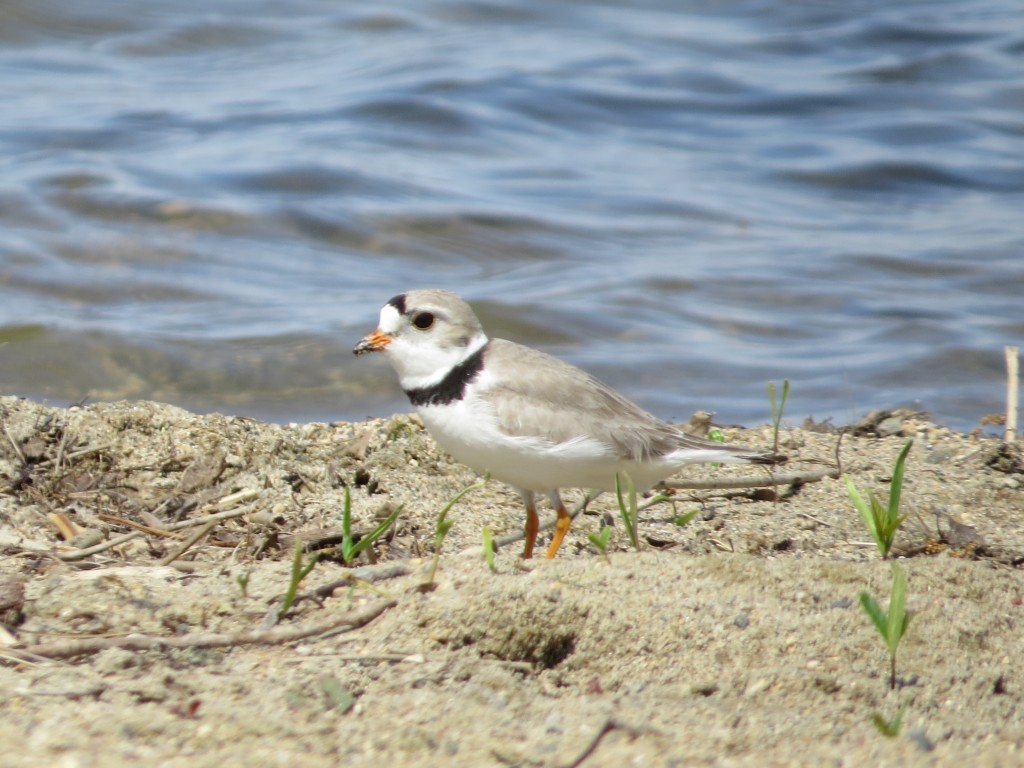
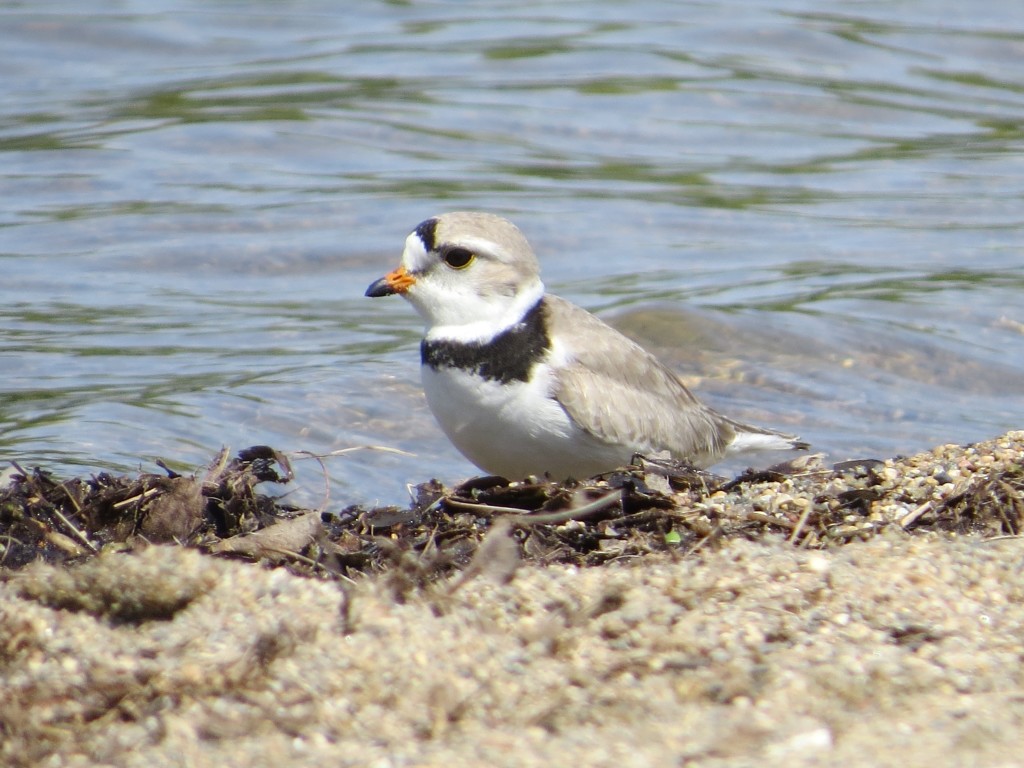
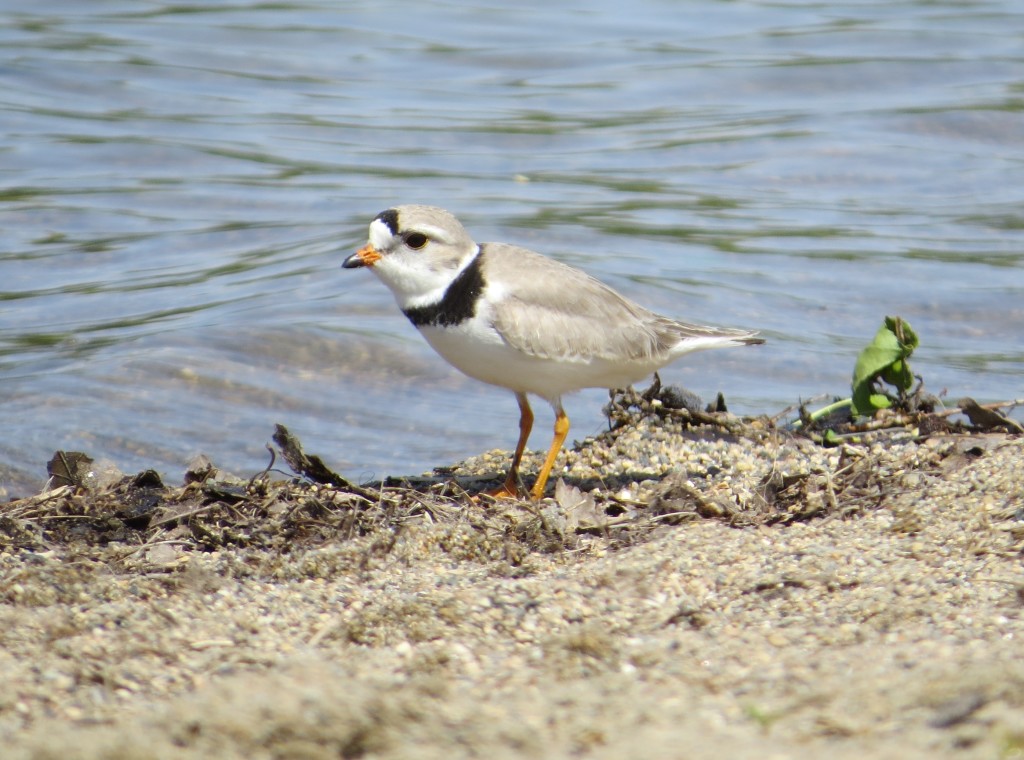 Notice anything unusual about this PIPL? Naked legs! Almost every Piping Plover from the Great Lakes and Northern Great Plains populations are banded. The Northern Great Plains and Atlantic Coast populations of PIPL are listed as threatened while the Great Lakes population is listed as endangered. This bird that loves undisturbed, large sandy beach areas is in trouble. Getting to see one is a big deal.
Notice anything unusual about this PIPL? Naked legs! Almost every Piping Plover from the Great Lakes and Northern Great Plains populations are banded. The Northern Great Plains and Atlantic Coast populations of PIPL are listed as threatened while the Great Lakes population is listed as endangered. This bird that loves undisturbed, large sandy beach areas is in trouble. Getting to see one is a big deal.
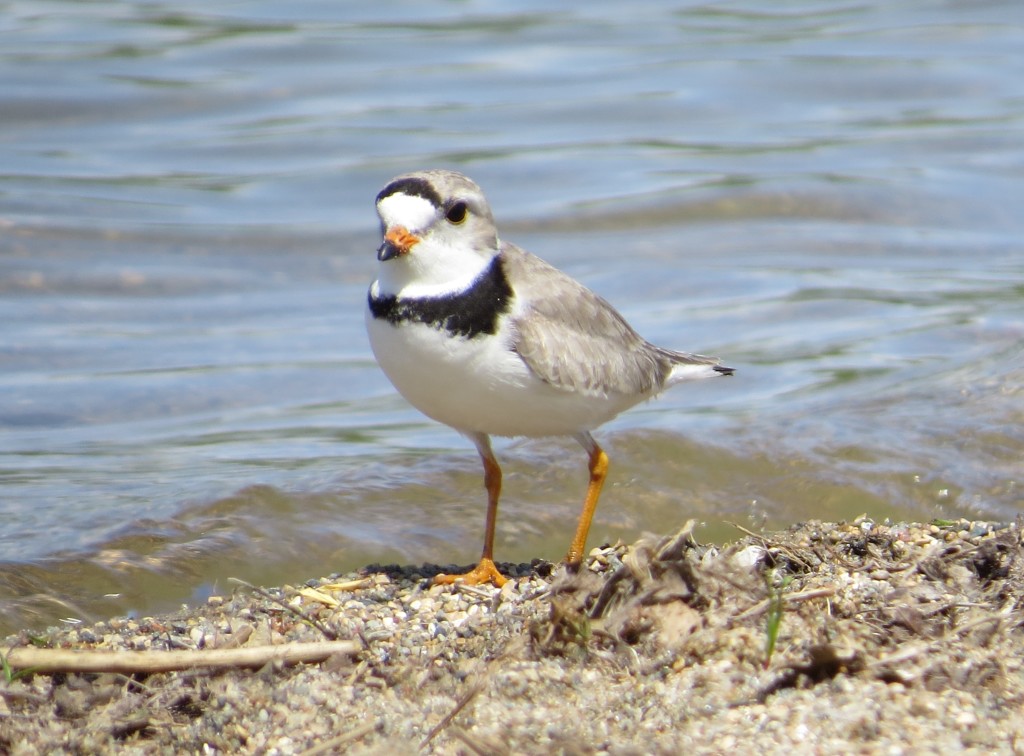
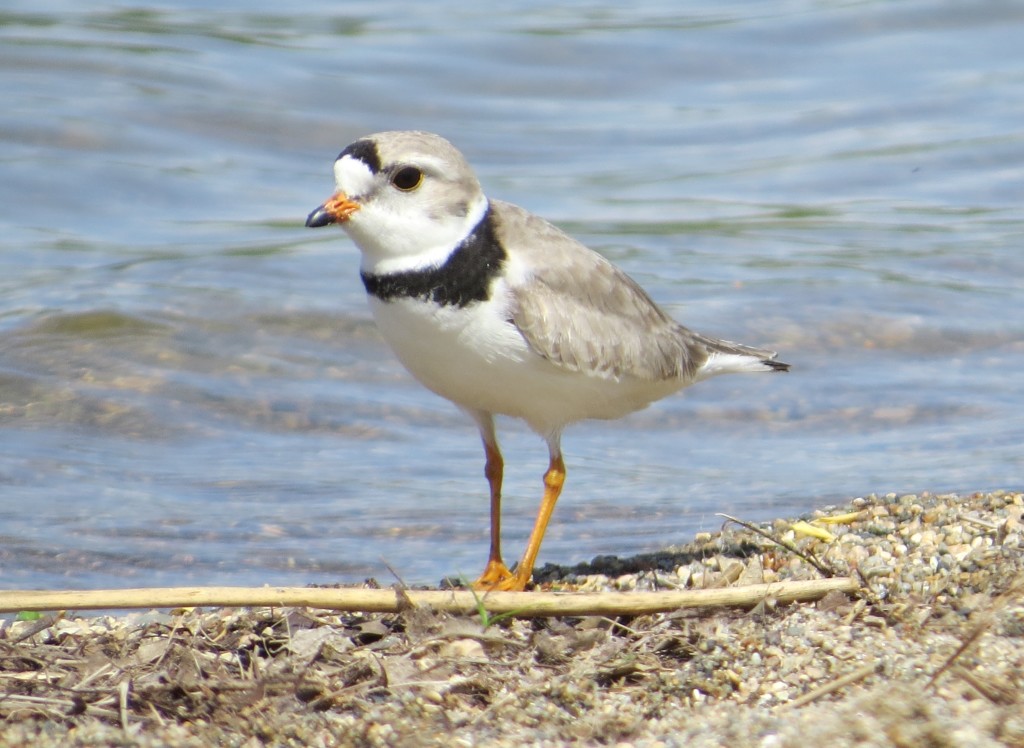 I still cannot get over this opportunity. I got my Piping Plover lifer last summer on Wisconsin’s Long Island right near Madeline Island in the Chequamegon Bay area of Lake Superior. I paid a hefty sum of money to charter a boat to get a brief, bobbing, distant look at this special bird. Now I had a lengthy look at one at my feet at home for free. Even better was that other birders were able to come out and enjoy this bird with some even getting their life looks at it. So, thanks, Mar, for taking me to the beach! It just goes to show that any bird can show up anytime, anywhere. Just when you dismiss a park as being mediocre, it totally surprises you.
I still cannot get over this opportunity. I got my Piping Plover lifer last summer on Wisconsin’s Long Island right near Madeline Island in the Chequamegon Bay area of Lake Superior. I paid a hefty sum of money to charter a boat to get a brief, bobbing, distant look at this special bird. Now I had a lengthy look at one at my feet at home for free. Even better was that other birders were able to come out and enjoy this bird with some even getting their life looks at it. So, thanks, Mar, for taking me to the beach! It just goes to show that any bird can show up anytime, anywhere. Just when you dismiss a park as being mediocre, it totally surprises you.
Speaking of more surprises, after I dropped the kids off at school on Monday morning I went out to our county’s shorebird spot. While I was scanning for shorebirds, a White-faced Ibis dropped out of the sky and landed right in front of me! This is a rare bird for our area and one I never expected to get for the county.
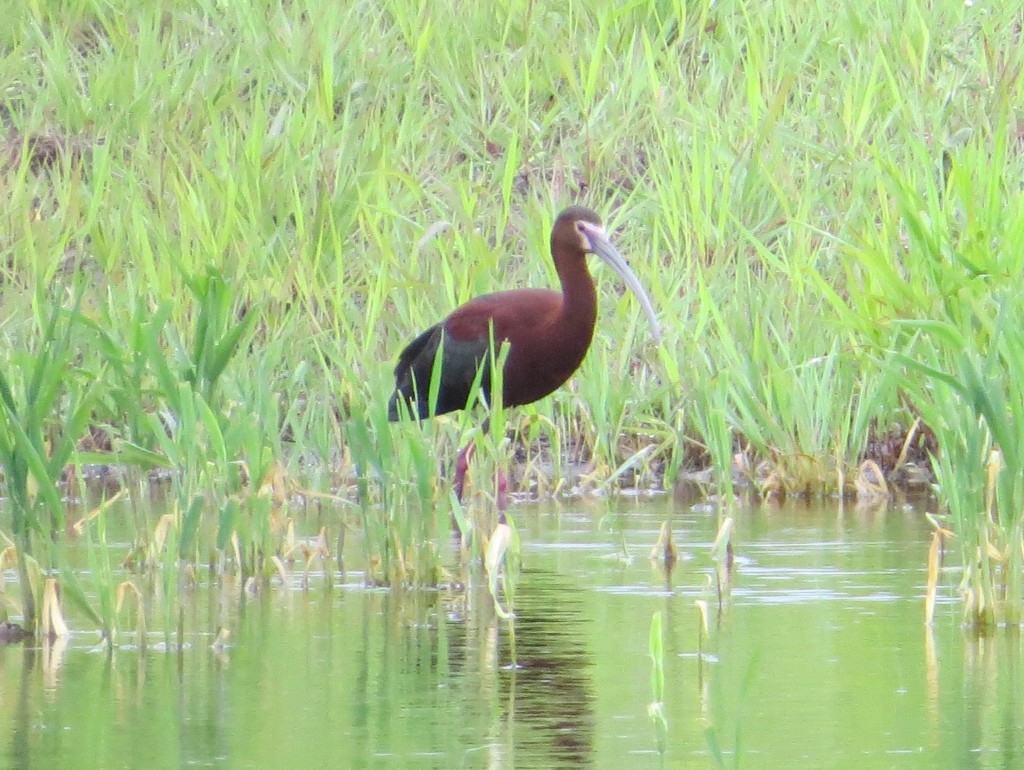
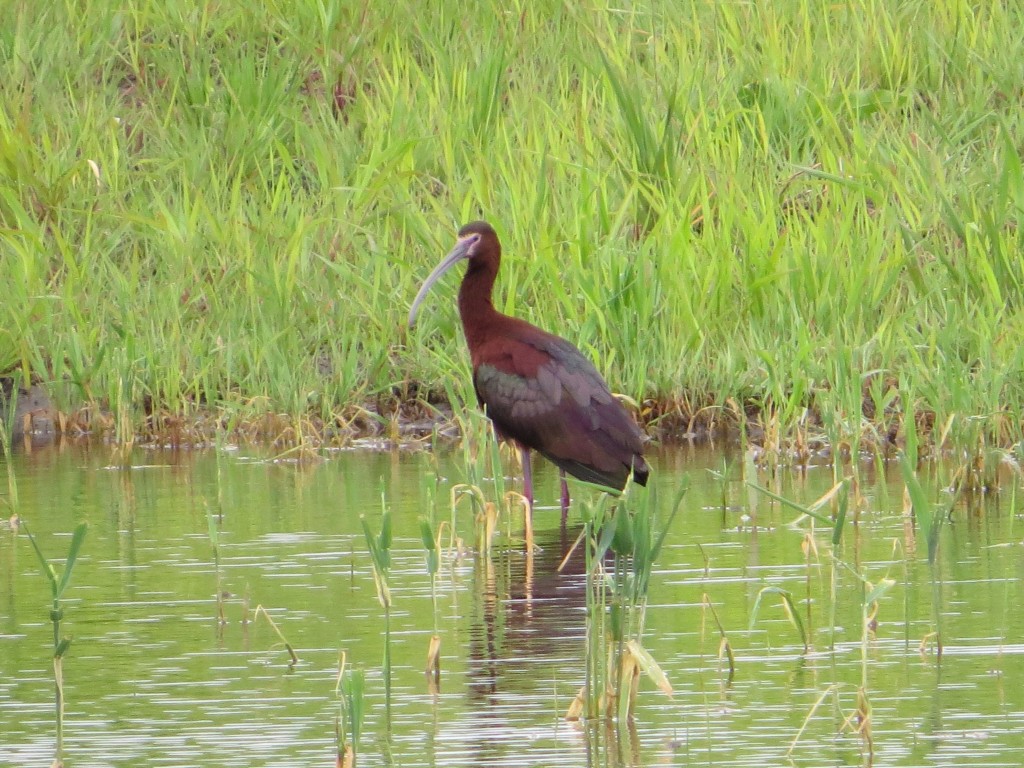 I called Steve, and he was just about to ditch work when it all the sudden decided to fly away, never to be seen again. I guess I was in the right place at the right time. Steve wasn’t interested in the only other shorebird there, a Stilt Sandpiper.
I called Steve, and he was just about to ditch work when it all the sudden decided to fly away, never to be seen again. I guess I was in the right place at the right time. Steve wasn’t interested in the only other shorebird there, a Stilt Sandpiper.
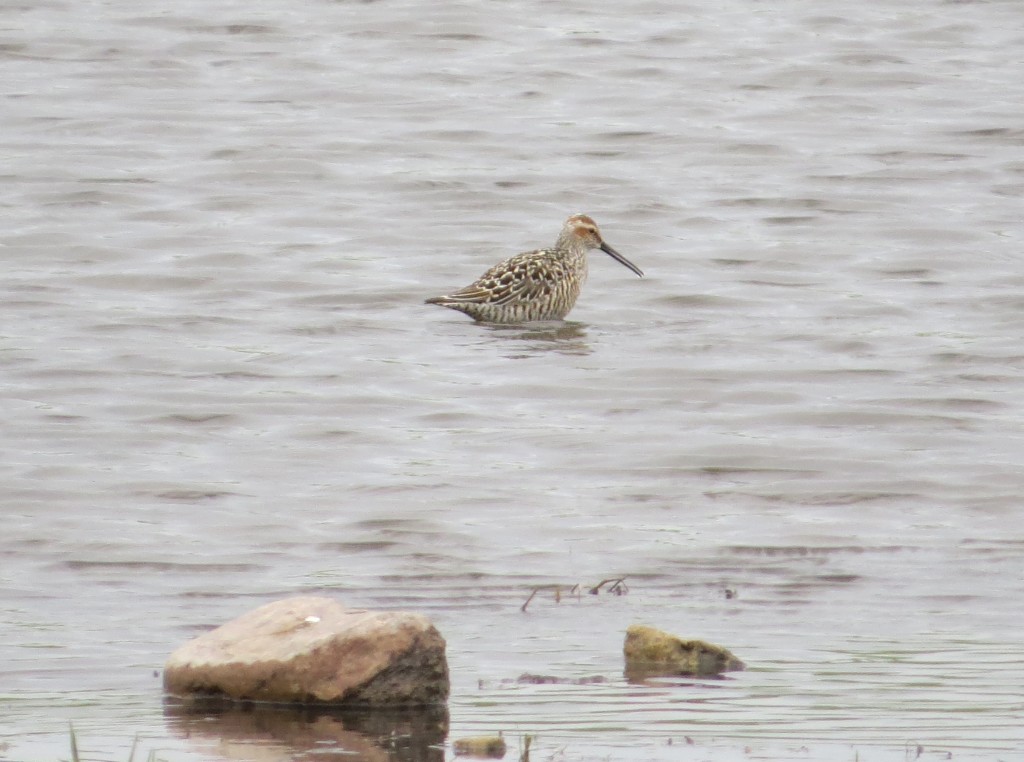
It had been an epic two days of local birding on the heels of a very active vagrant season for me. I really do want to slow the birding down, but the birds are not making it easy on me. Even when I returned home after the Ibis, I was greeted by the cheerful song of a new yard bird. And it wasn’t just any bird, it was the Chestnut-sided Warbler, the very bird that got me addicted to this hobby in the first place.
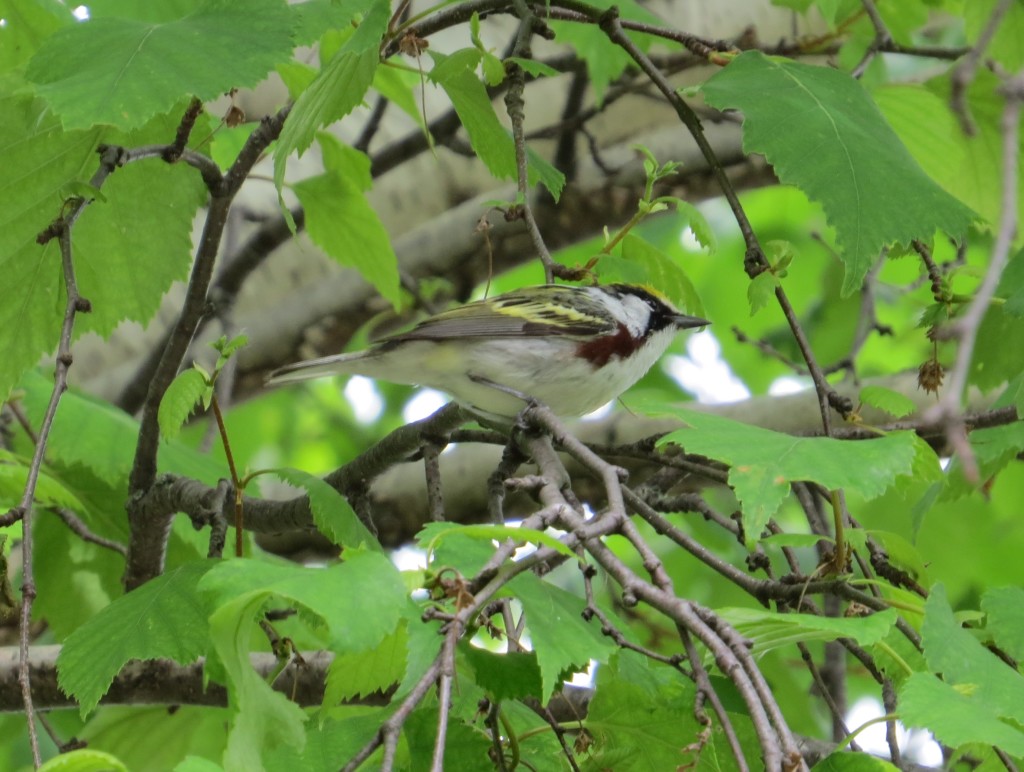

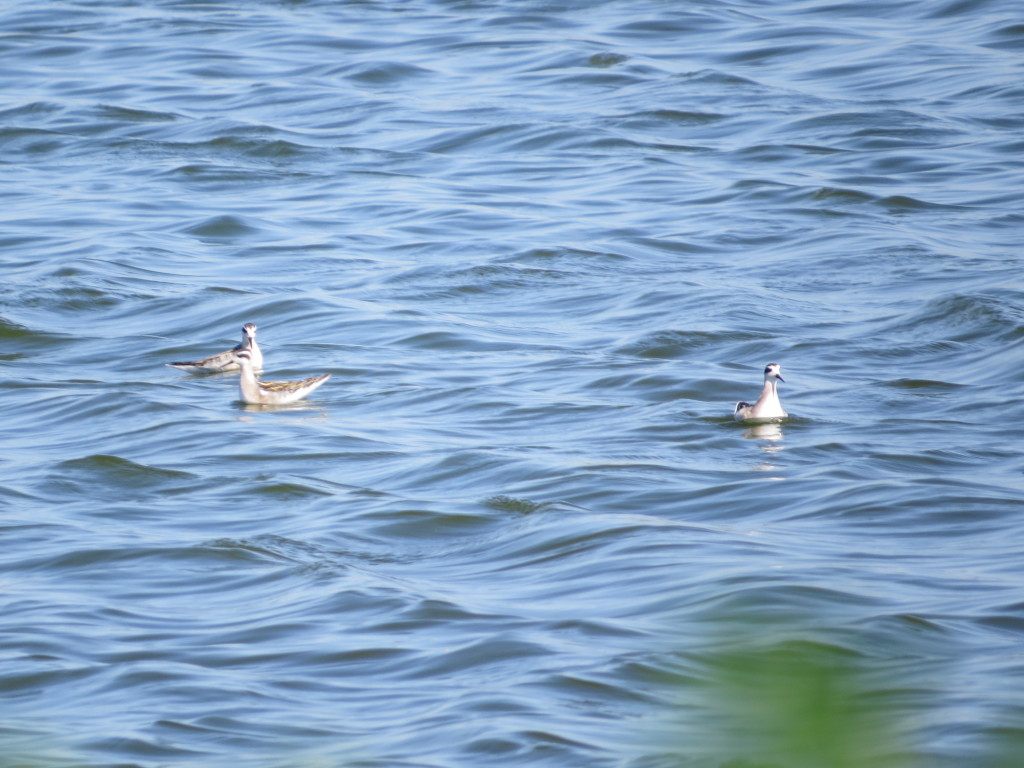
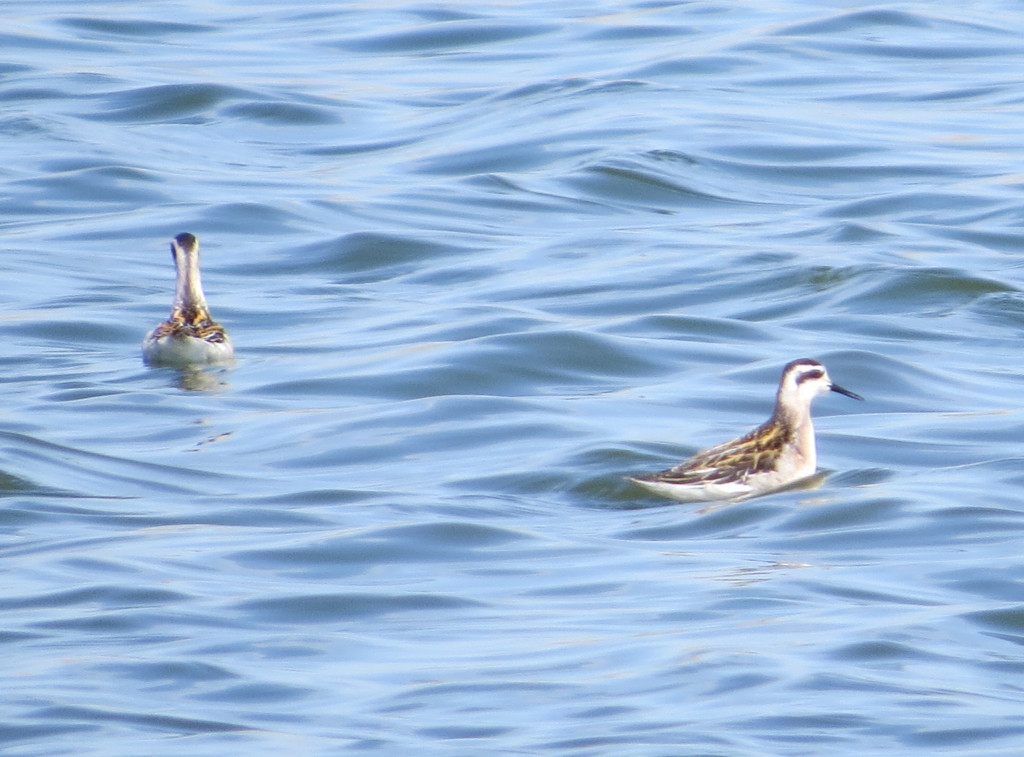
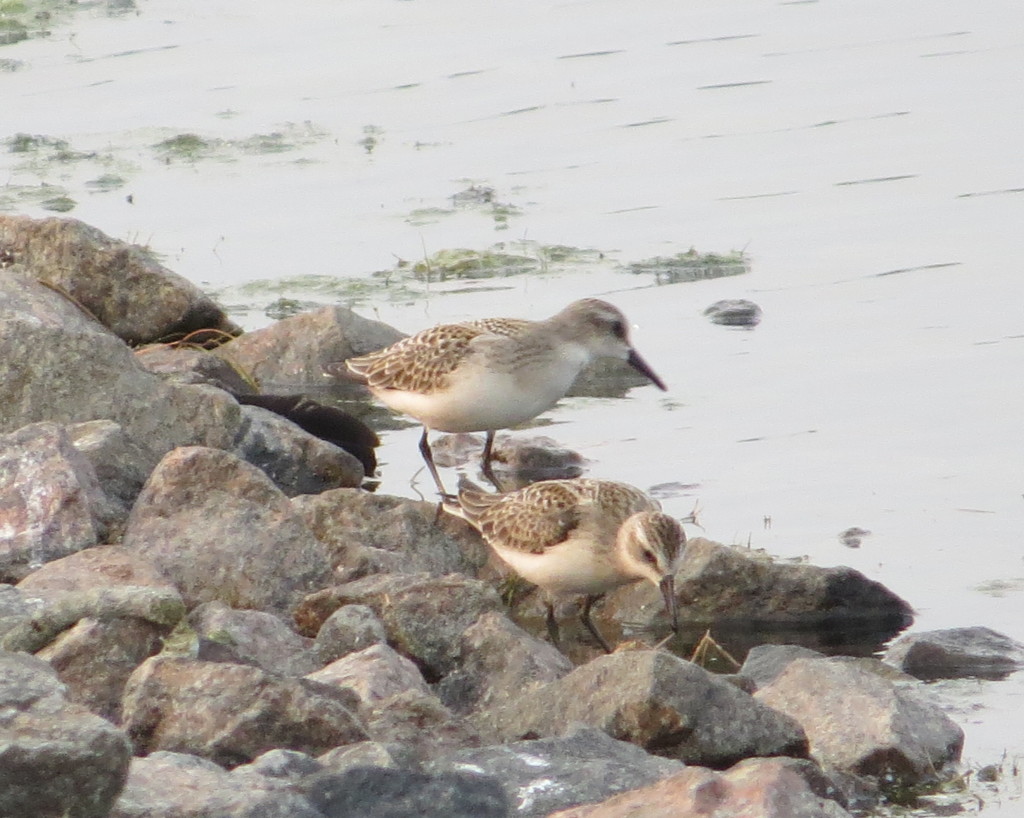
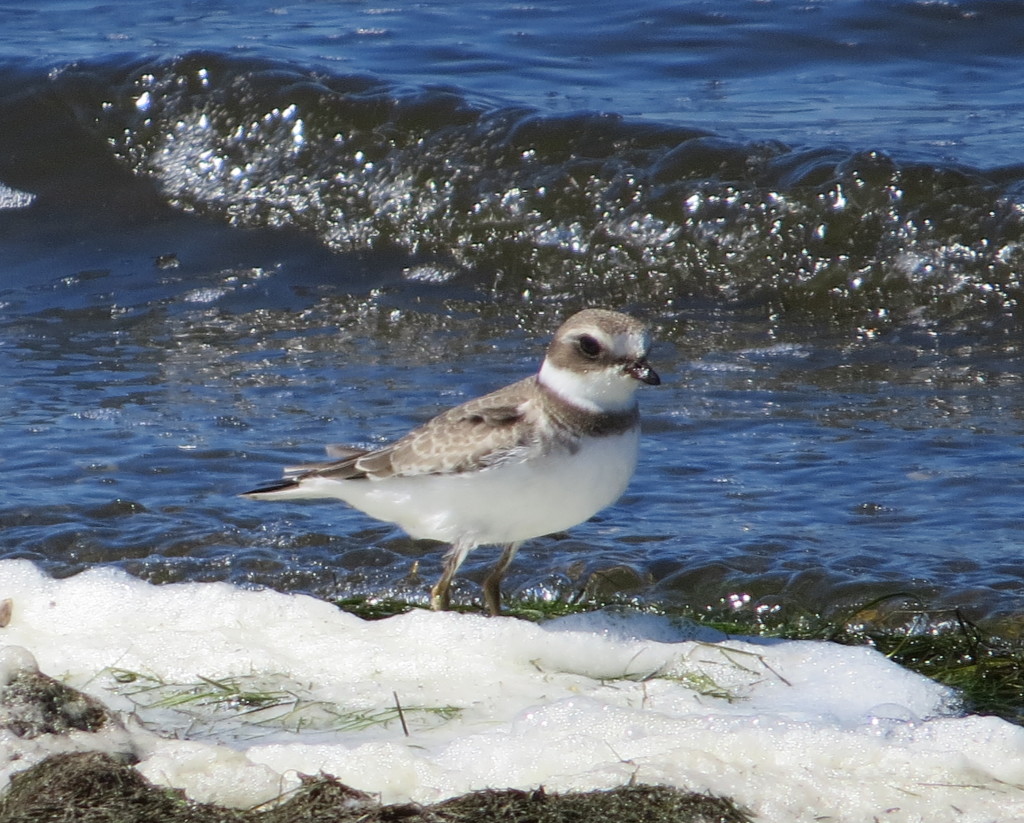
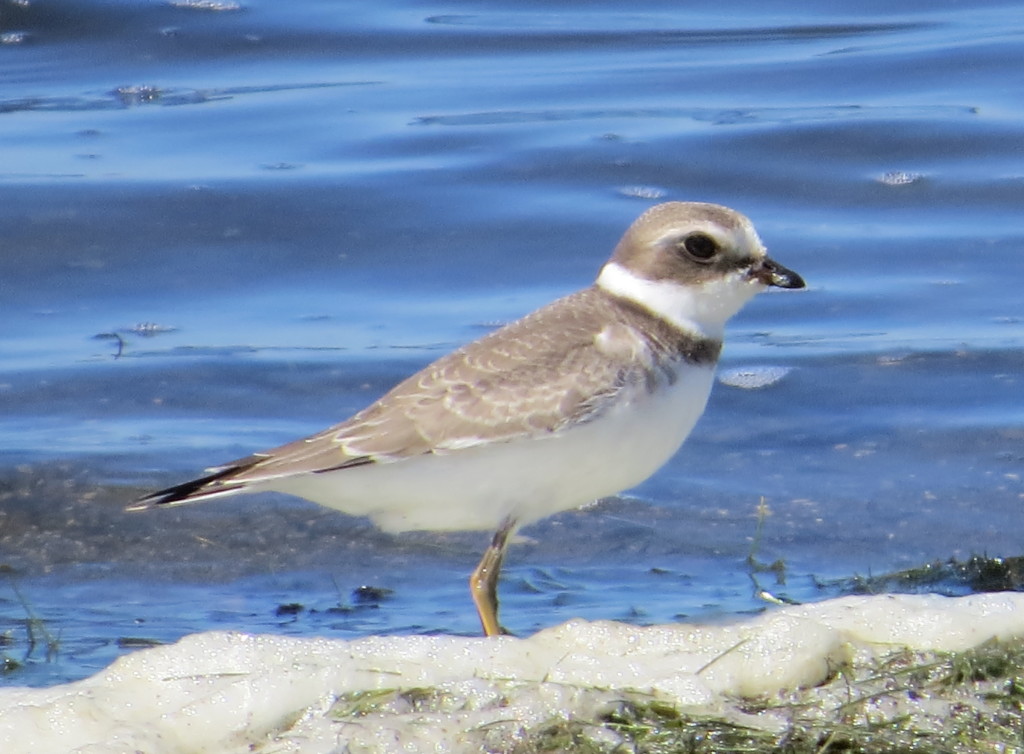
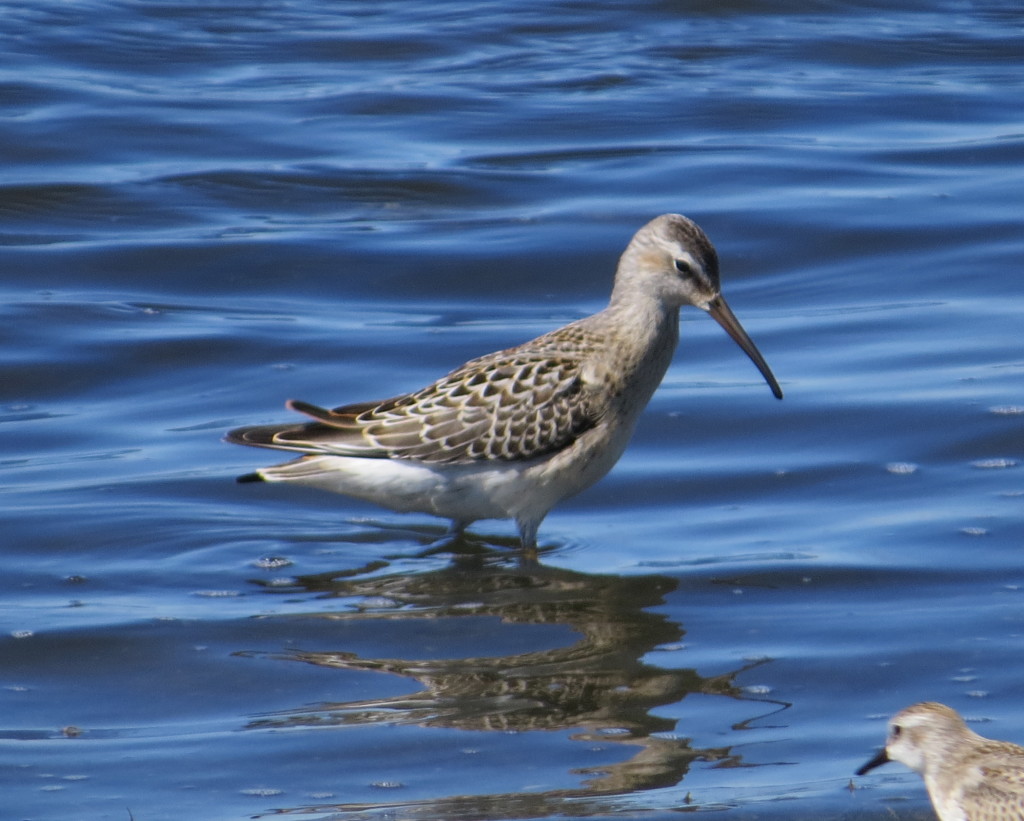
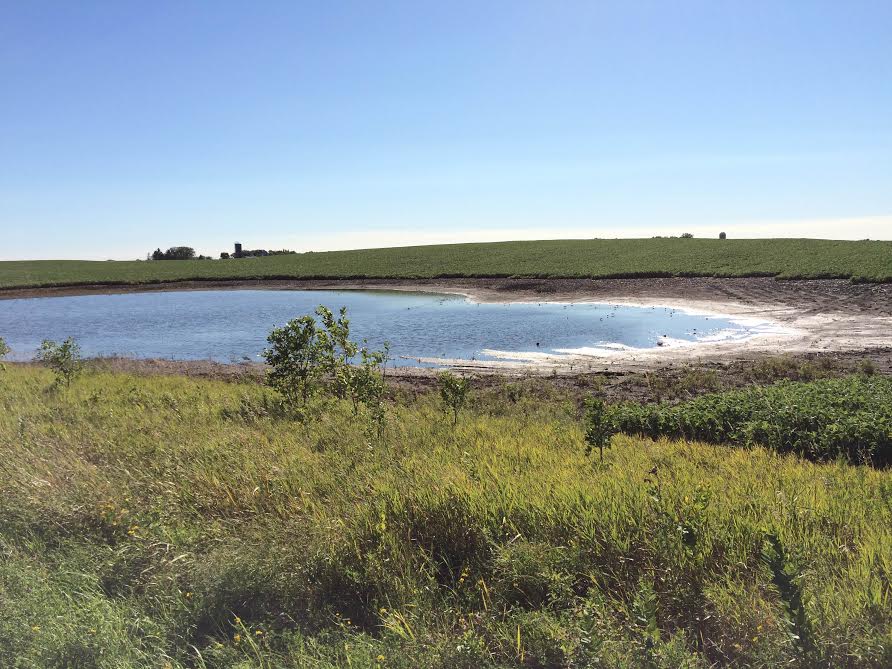 The flooded drain tile intake that created this spot was only about two acres in size. When there is no other habitat around, that is all you need. At first, there was nothing but Killdeer and the odd Lesser Yellowlegs or two, harbingers of good things to come.
The flooded drain tile intake that created this spot was only about two acres in size. When there is no other habitat around, that is all you need. At first, there was nothing but Killdeer and the odd Lesser Yellowlegs or two, harbingers of good things to come.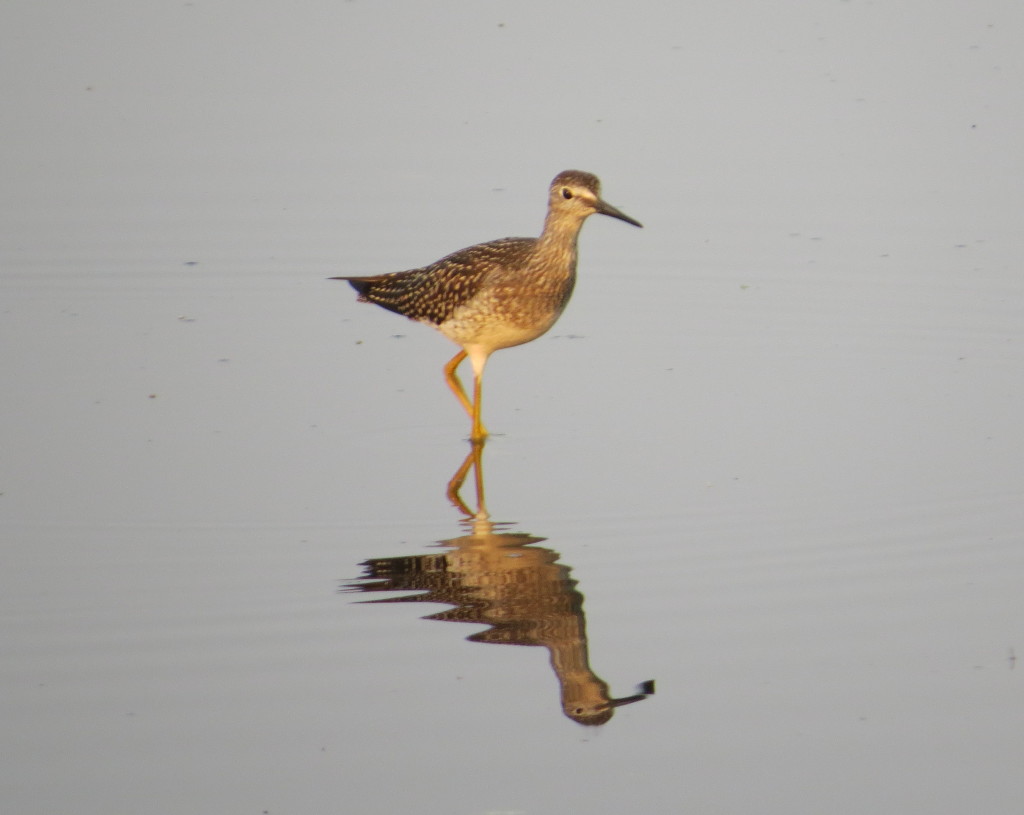 So this is the story of my accidental patch. Having it so close to home gave me the opportunity to check it multiple times a day, day after day. Before I knew it, I was becoming a devoted patch birder whose persistence started to pay dividends in things like a pair of dapper Baird’s Sandpipers.
So this is the story of my accidental patch. Having it so close to home gave me the opportunity to check it multiple times a day, day after day. Before I knew it, I was becoming a devoted patch birder whose persistence started to pay dividends in things like a pair of dapper Baird’s Sandpipers.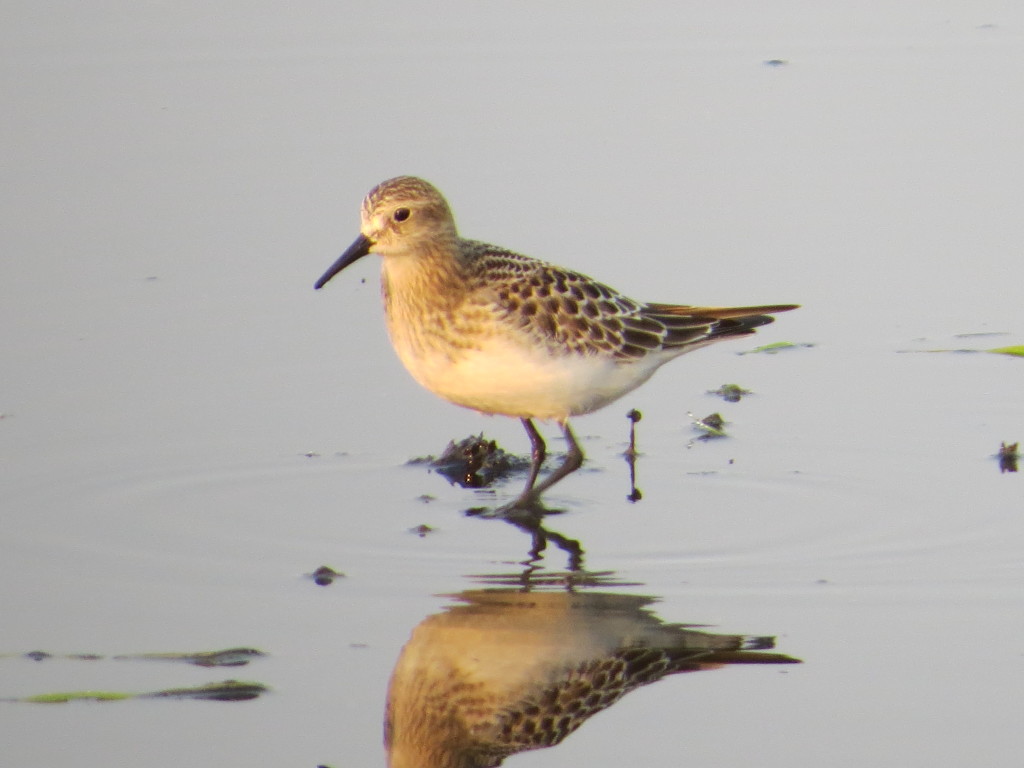
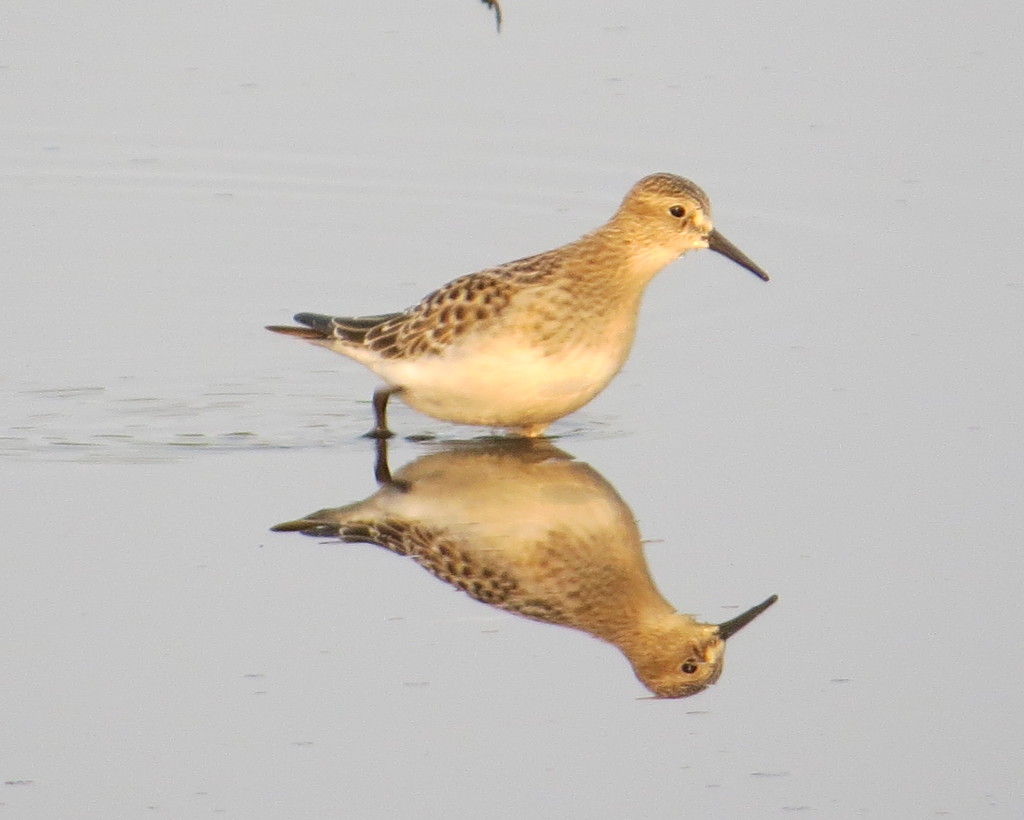
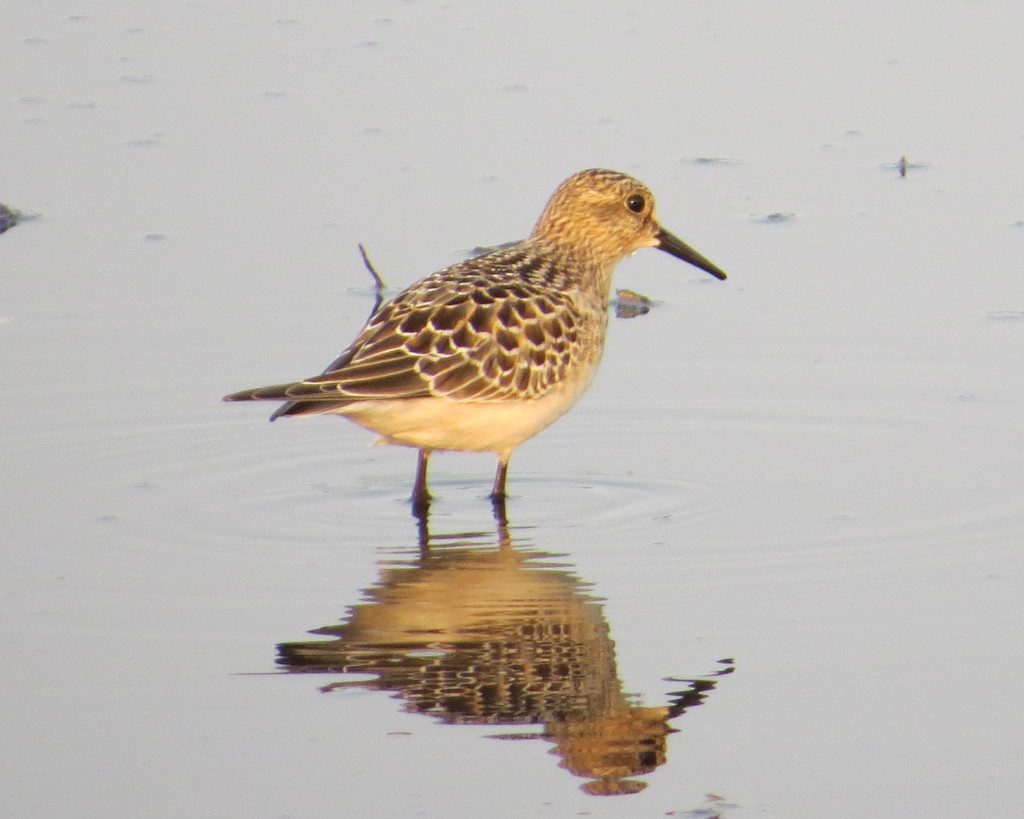
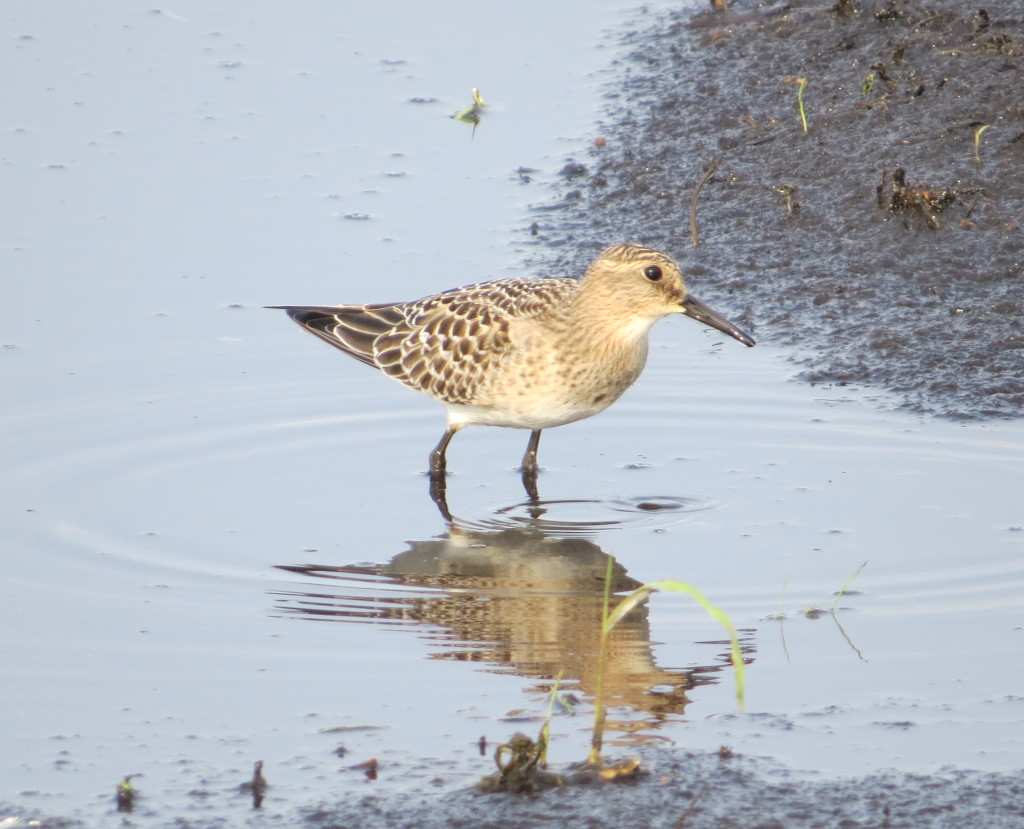 One of the benefits of a having a patch is that, in addition to looking for new birds that have joined the party, you can also keep tabs on the regulars, like the two Stilt Sandpipers that were there day in and day out.
One of the benefits of a having a patch is that, in addition to looking for new birds that have joined the party, you can also keep tabs on the regulars, like the two Stilt Sandpipers that were there day in and day out.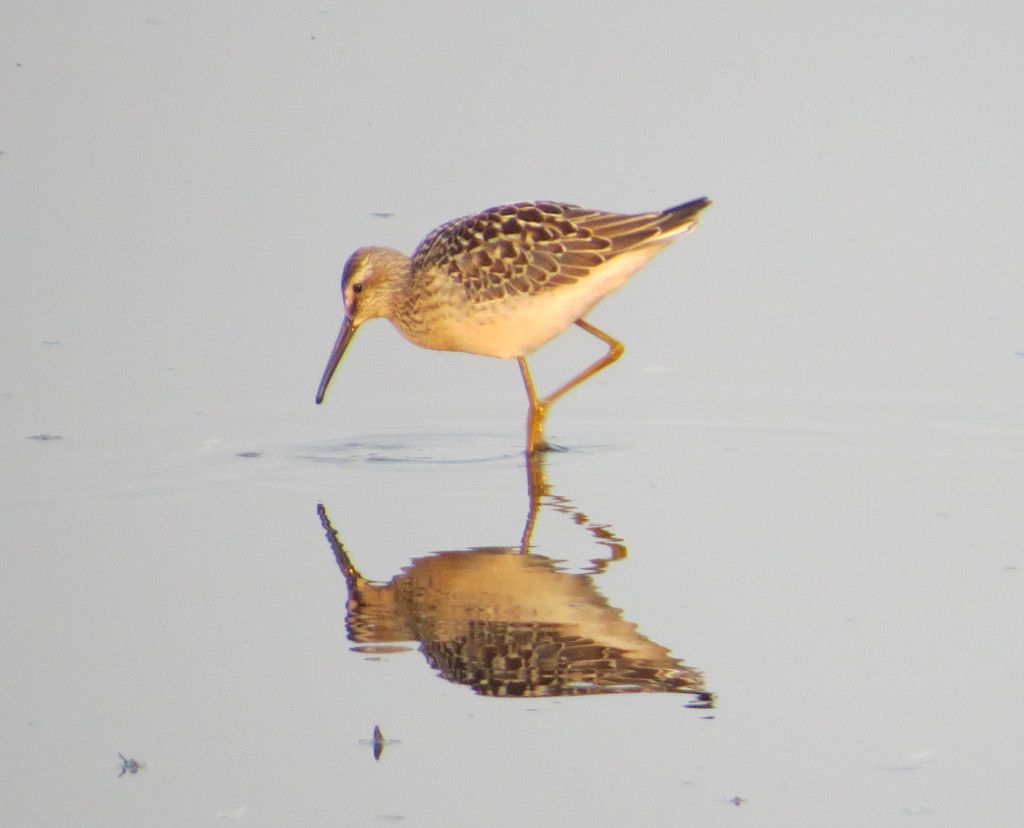
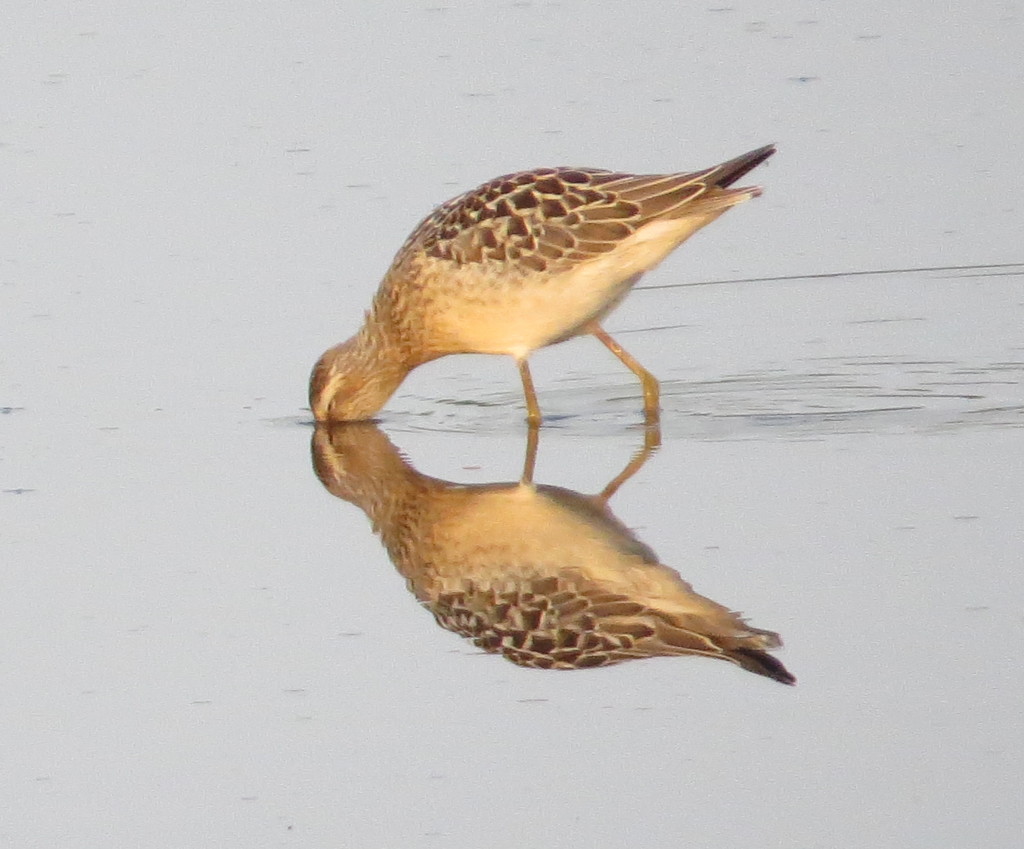
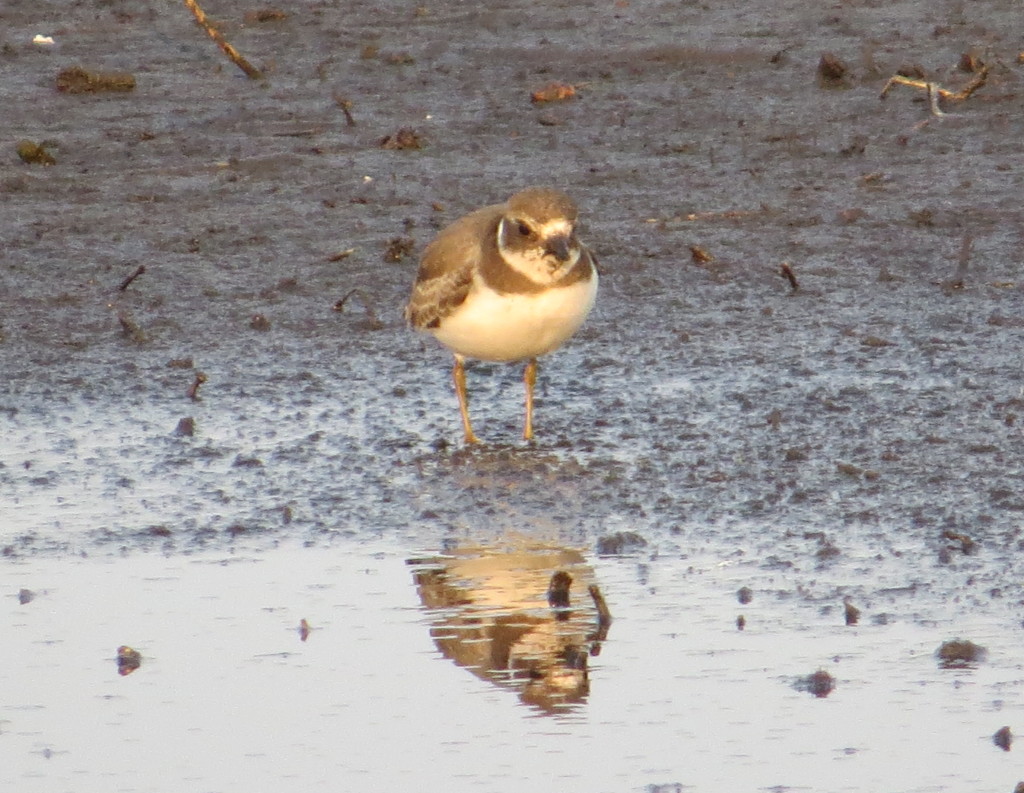
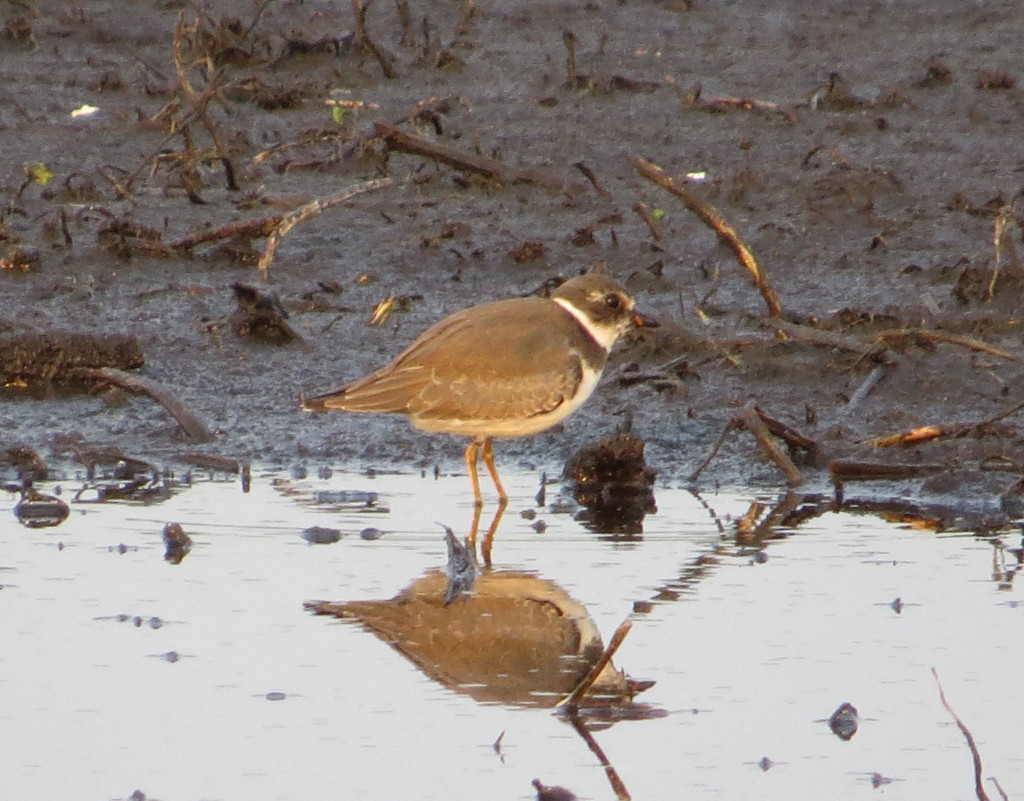
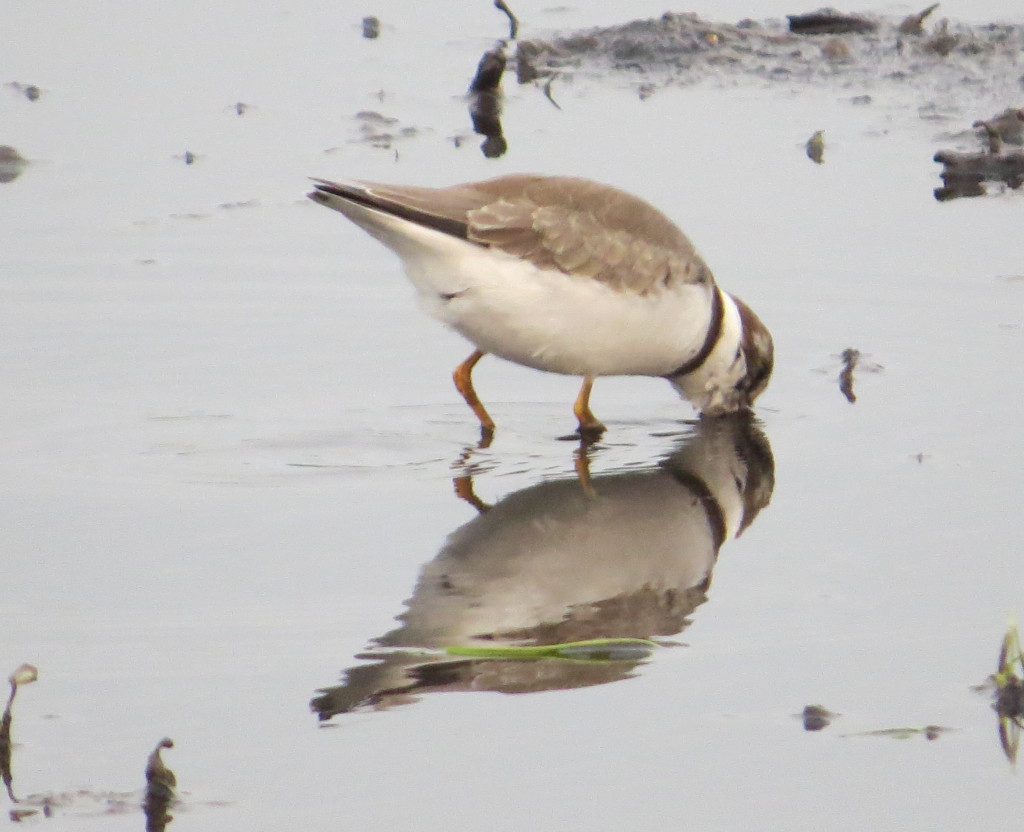 This patch I found turned out to be a great workshop on shorebird identification for myself. I had these birds close (30 feet or less) and in great light when I visited in the morning. I could clearly see subtle differences in coloration, differences in movements and behaviors, and relative size comparisons to other shorebirds. Even the ubiquitous Killdeer would sometimes do something interesting.
This patch I found turned out to be a great workshop on shorebird identification for myself. I had these birds close (30 feet or less) and in great light when I visited in the morning. I could clearly see subtle differences in coloration, differences in movements and behaviors, and relative size comparisons to other shorebirds. Even the ubiquitous Killdeer would sometimes do something interesting.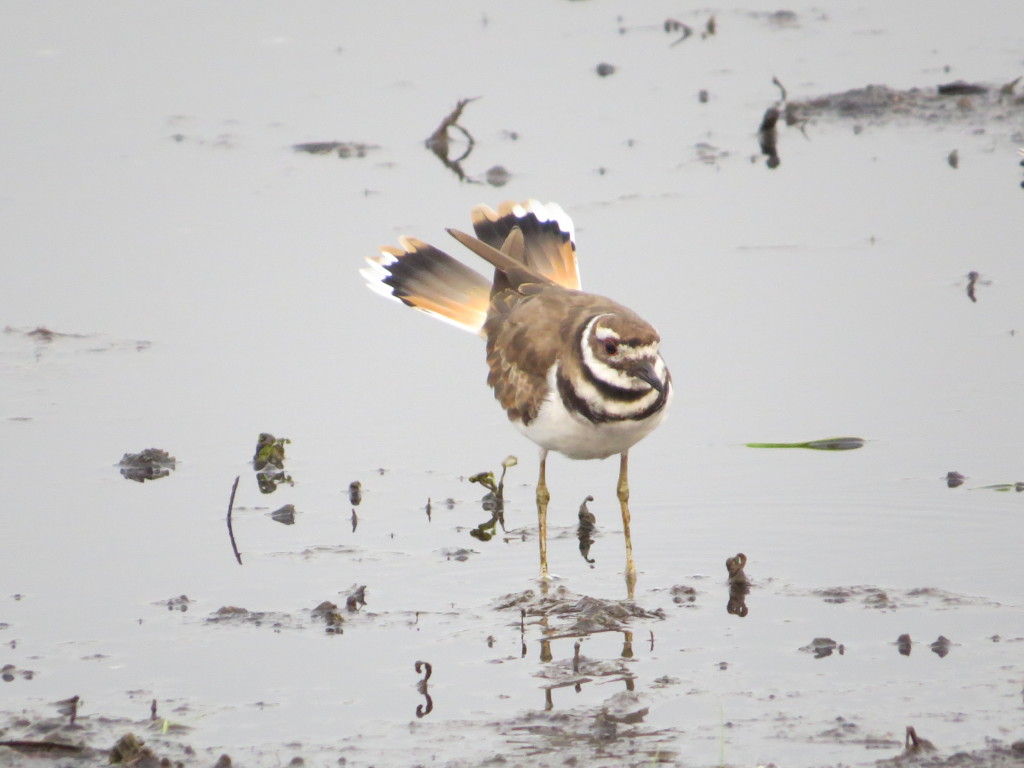
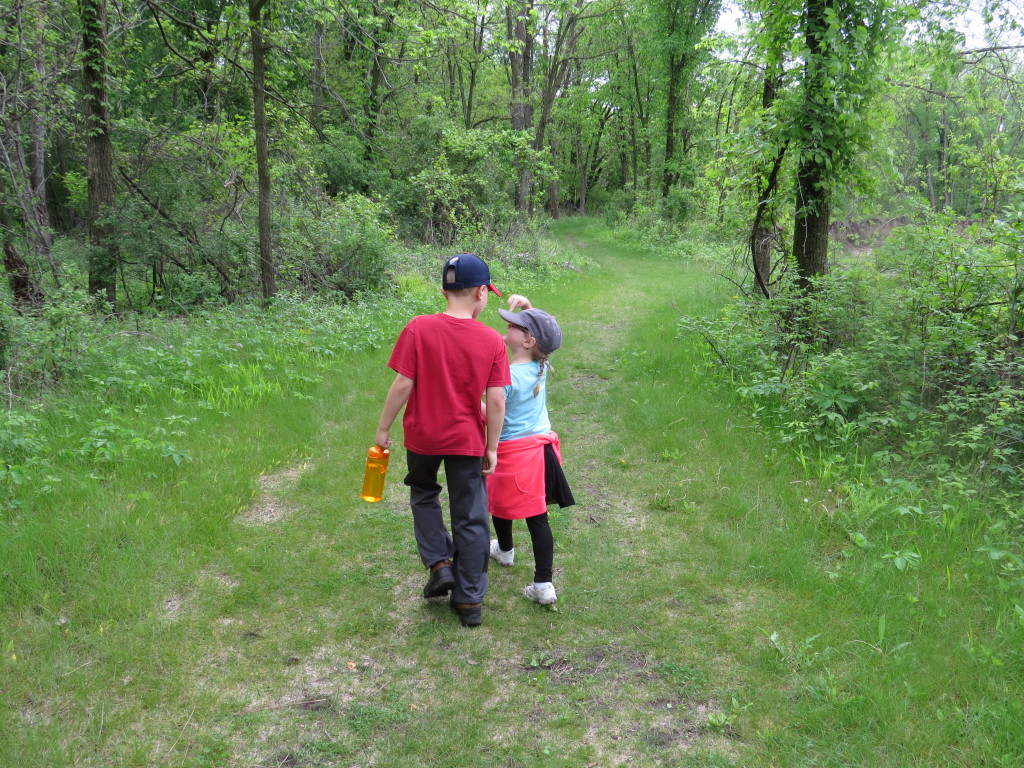 Getting to the scene a few hundred yards down the trail, I heard the bird immediately. Several birders and I strained to locate it. One lady claimed she saw it.
Getting to the scene a few hundred yards down the trail, I heard the bird immediately. Several birders and I strained to locate it. One lady claimed she saw it.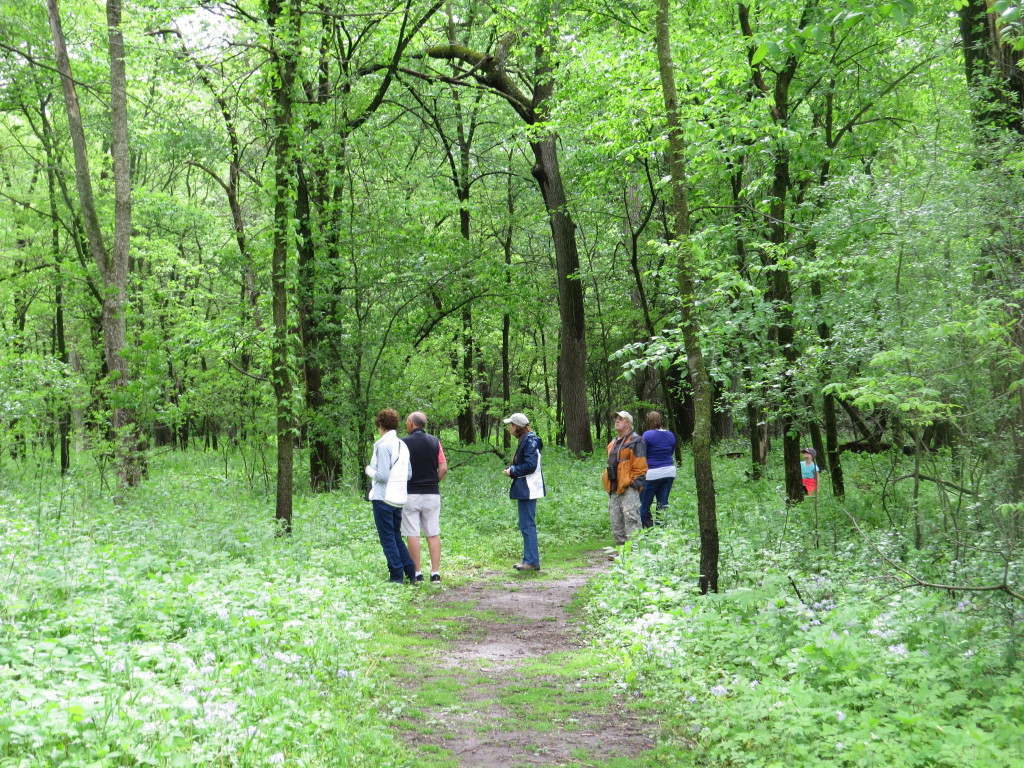
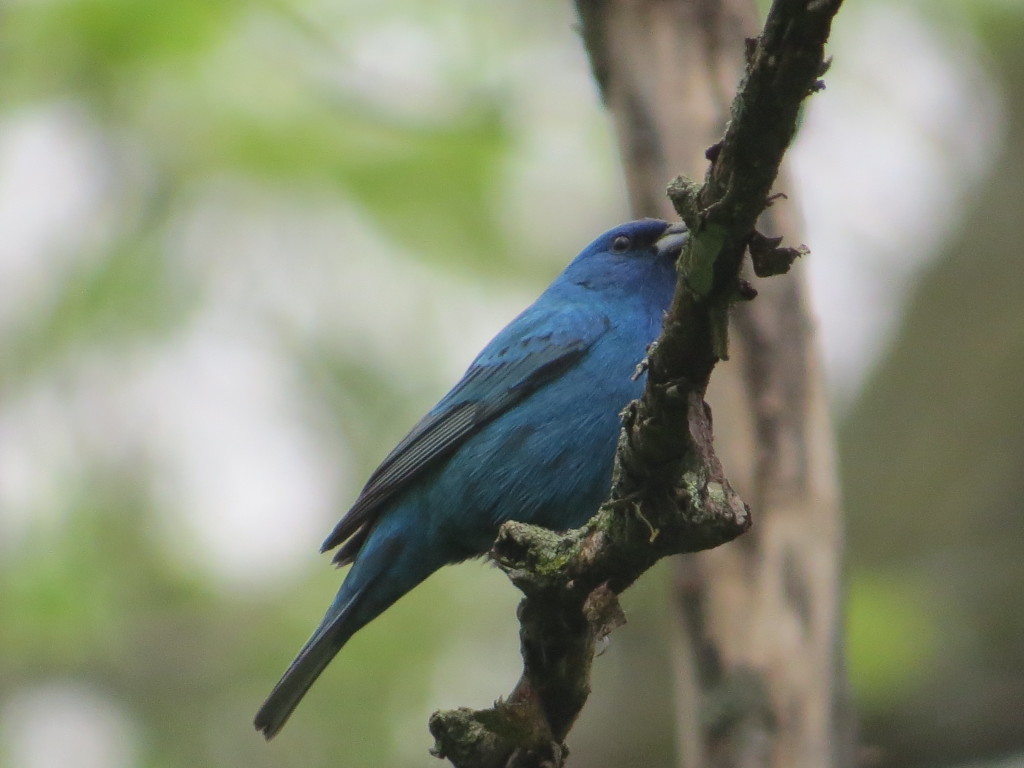 Before we left, I thought I heard the soft bee-buzzzz call of a Blue-winged Warbler. Nah, couldn’t be…
Before we left, I thought I heard the soft bee-buzzzz call of a Blue-winged Warbler. Nah, couldn’t be…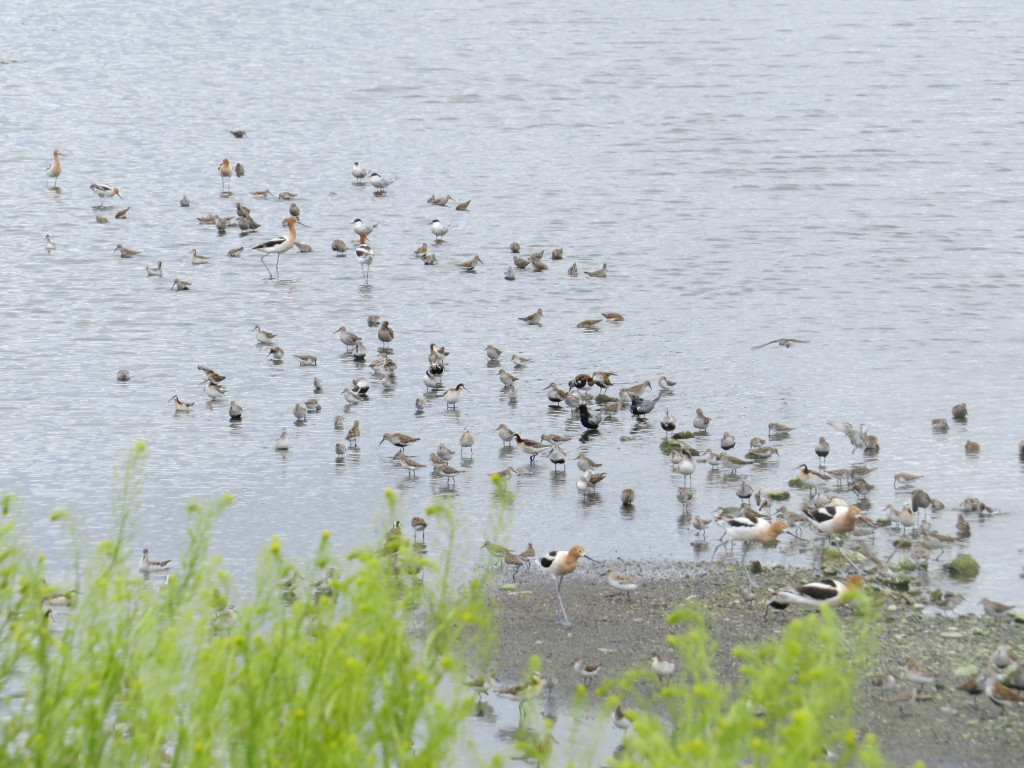
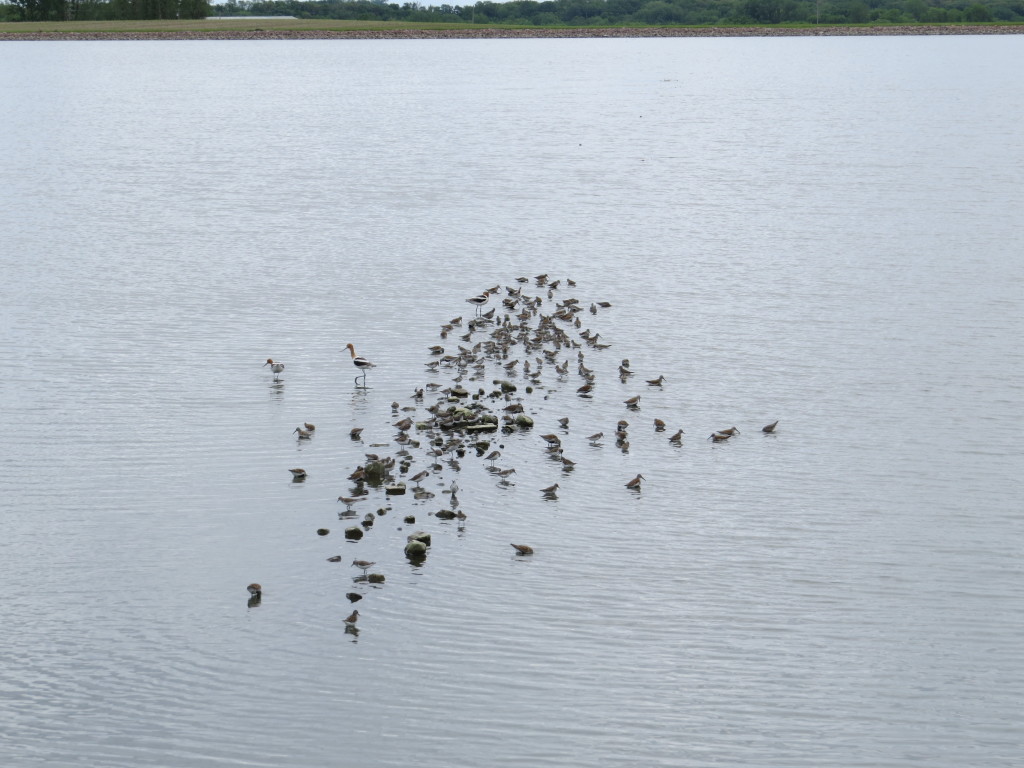
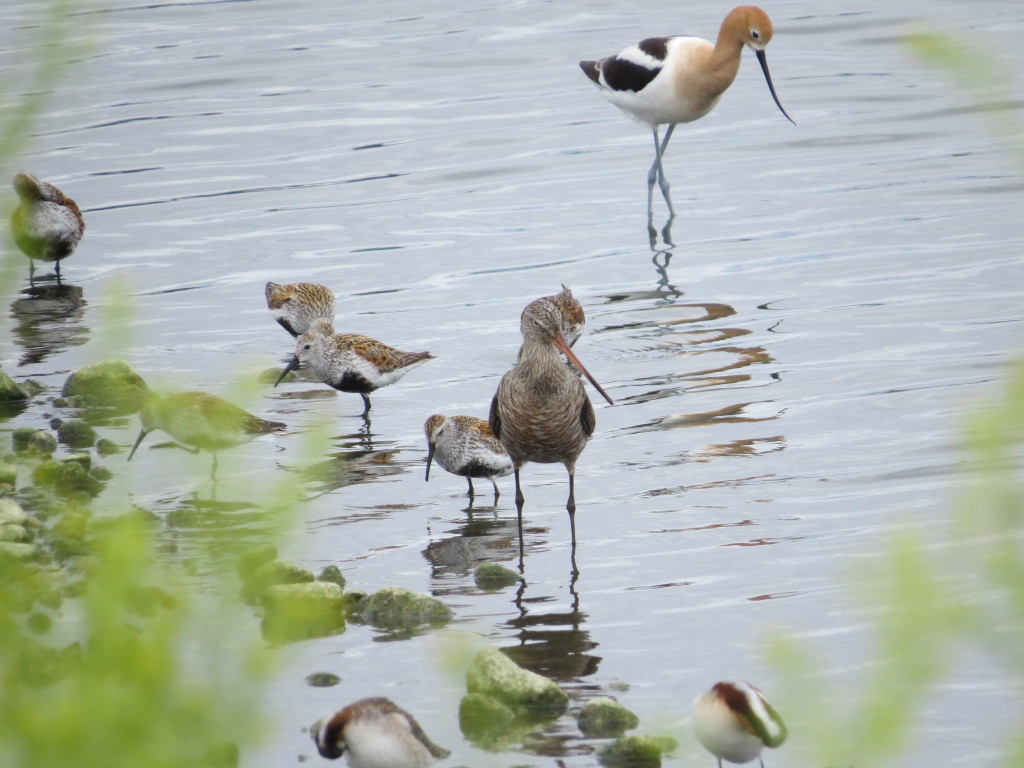
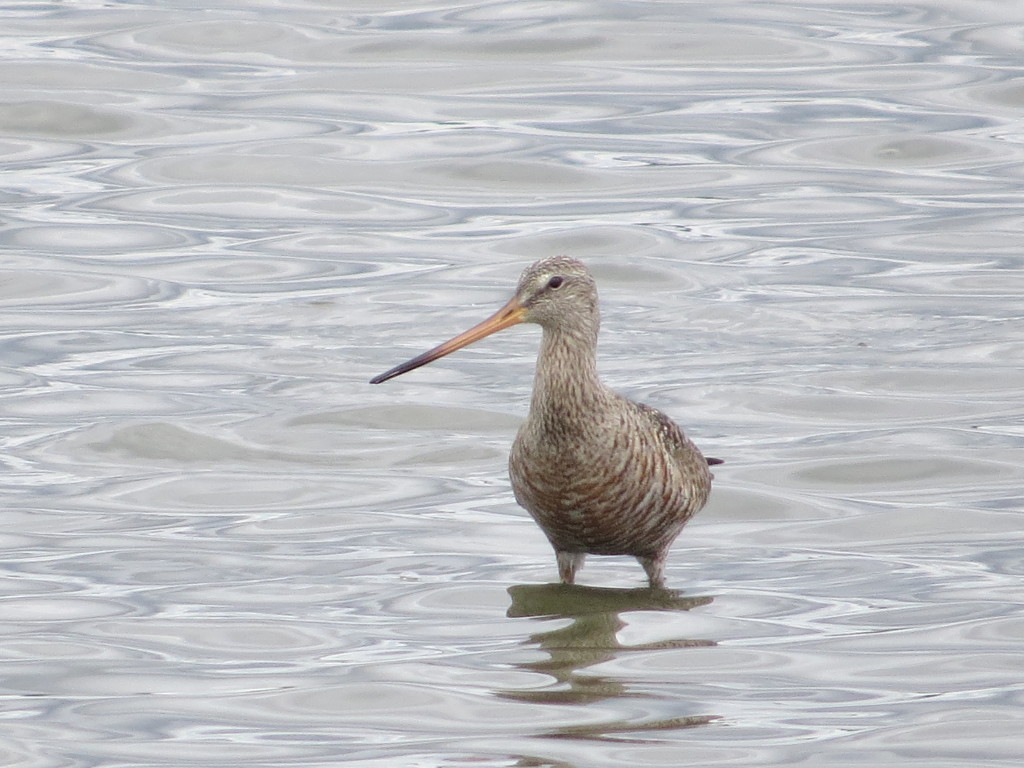
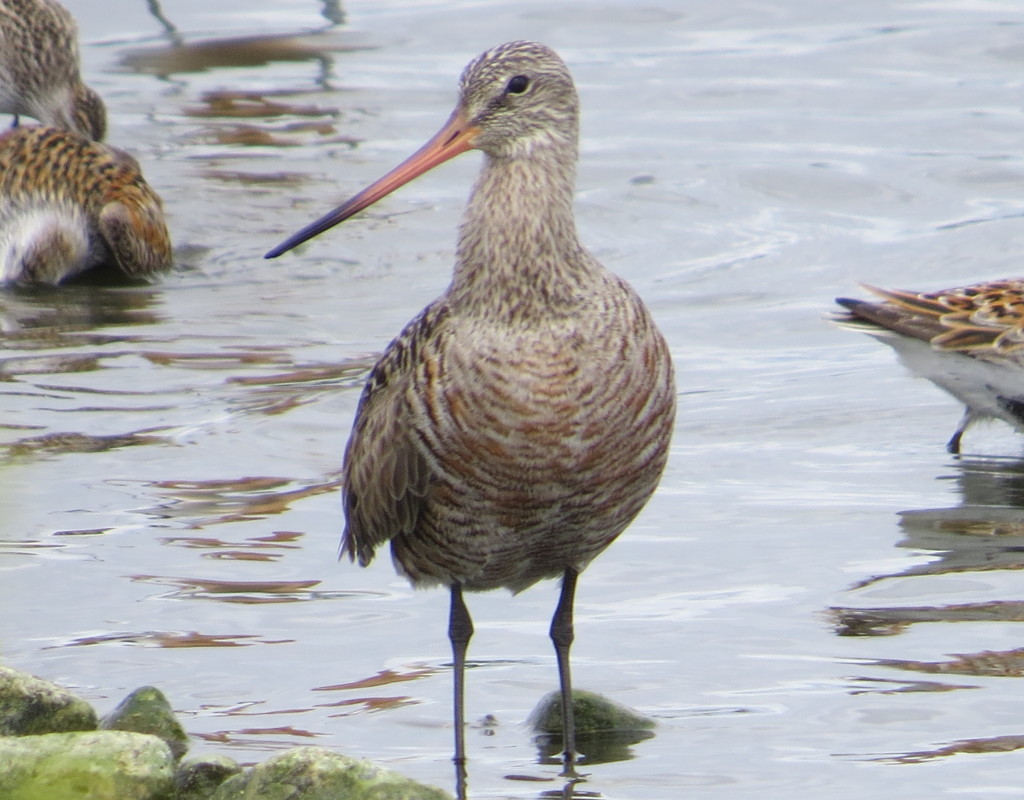
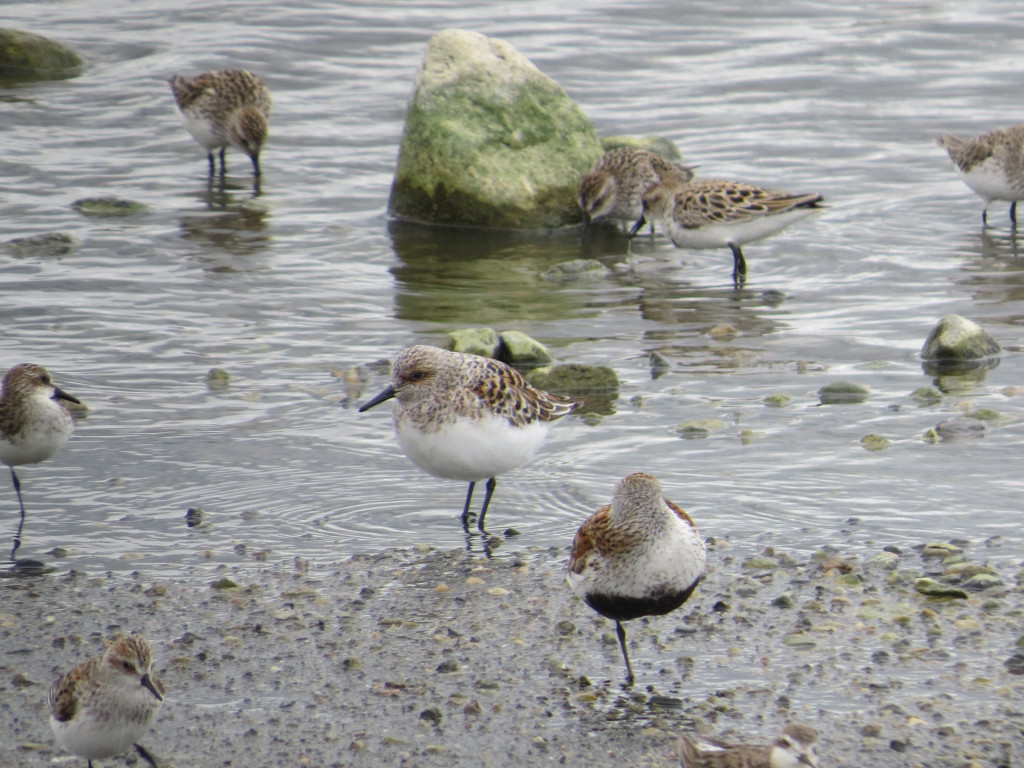
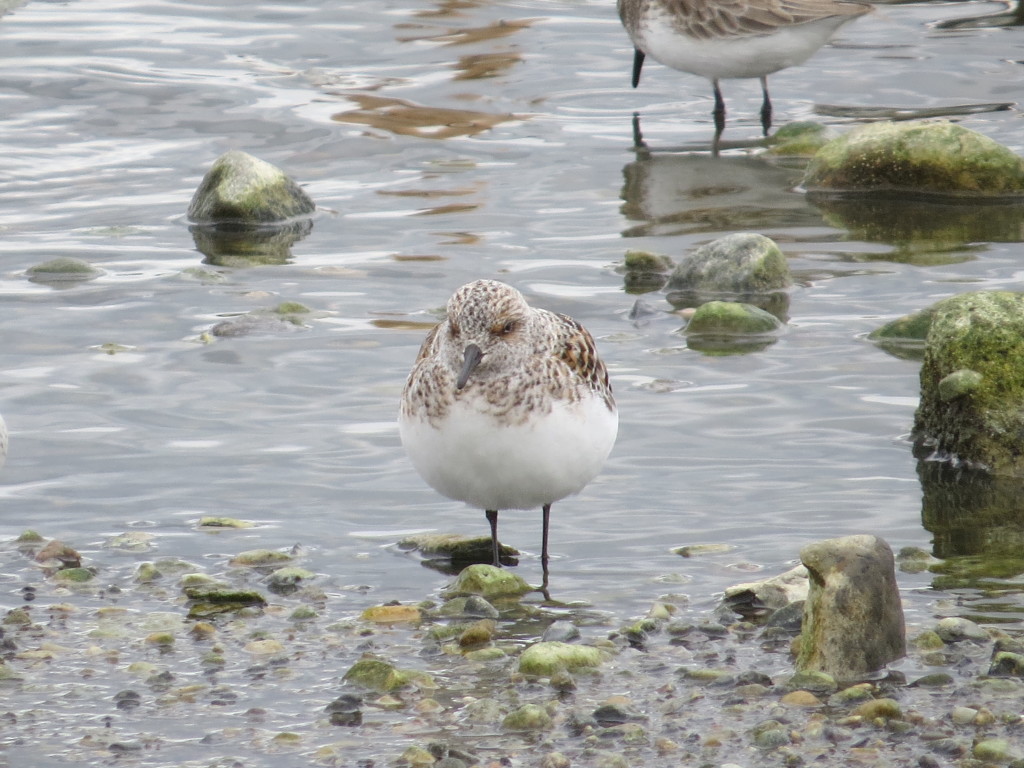 If two unplanned lifers weren’t enough, how about a third?! Several Terns caught my eye right away when we got to the ponds. Their bills looked excessively reddish and other clues were leading me to the conclusion that I was looking at Common Terns, which aren’t so common in Minnesota compared to the excessively common Forster’s Tern.
If two unplanned lifers weren’t enough, how about a third?! Several Terns caught my eye right away when we got to the ponds. Their bills looked excessively reddish and other clues were leading me to the conclusion that I was looking at Common Terns, which aren’t so common in Minnesota compared to the excessively common Forster’s Tern.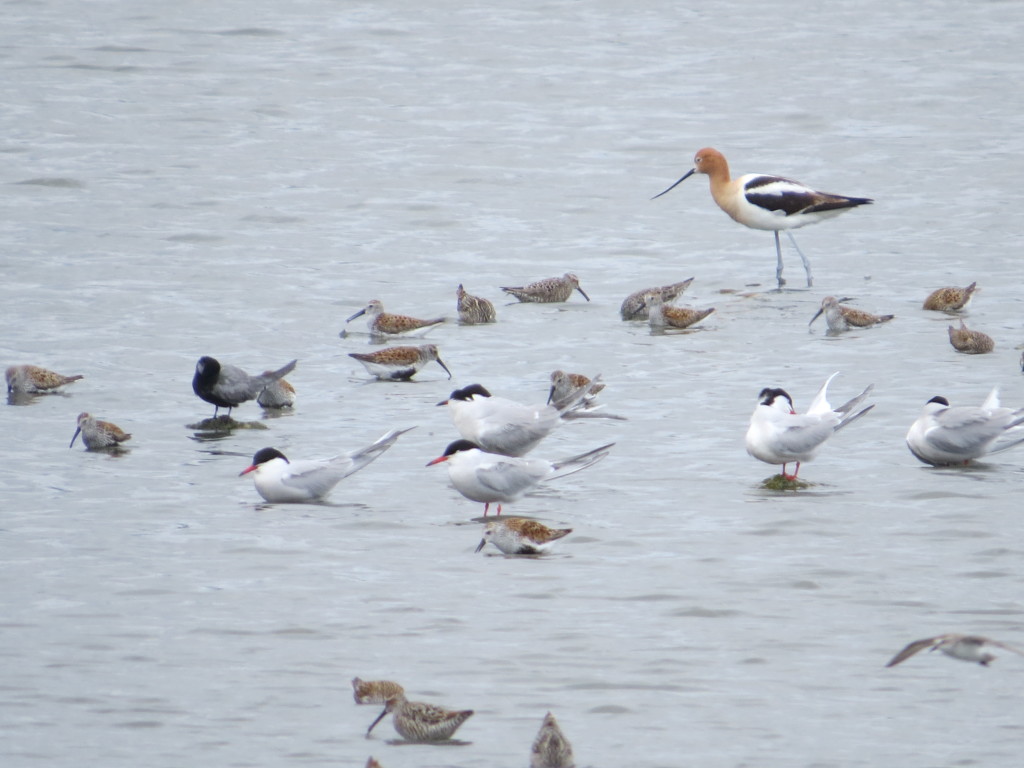 I spent much time agonizing over this ID after the fact as Common and Forster’s Terns are incredibly similar looking. Many hours were spent scouring images on Google, studying Sibley, etc. Common Terns have reddish-orange bills while Forster’s Terns have a straight-up orange color. The red really popped when I looked at these birds.
I spent much time agonizing over this ID after the fact as Common and Forster’s Terns are incredibly similar looking. Many hours were spent scouring images on Google, studying Sibley, etc. Common Terns have reddish-orange bills while Forster’s Terns have a straight-up orange color. The red really popped when I looked at these birds.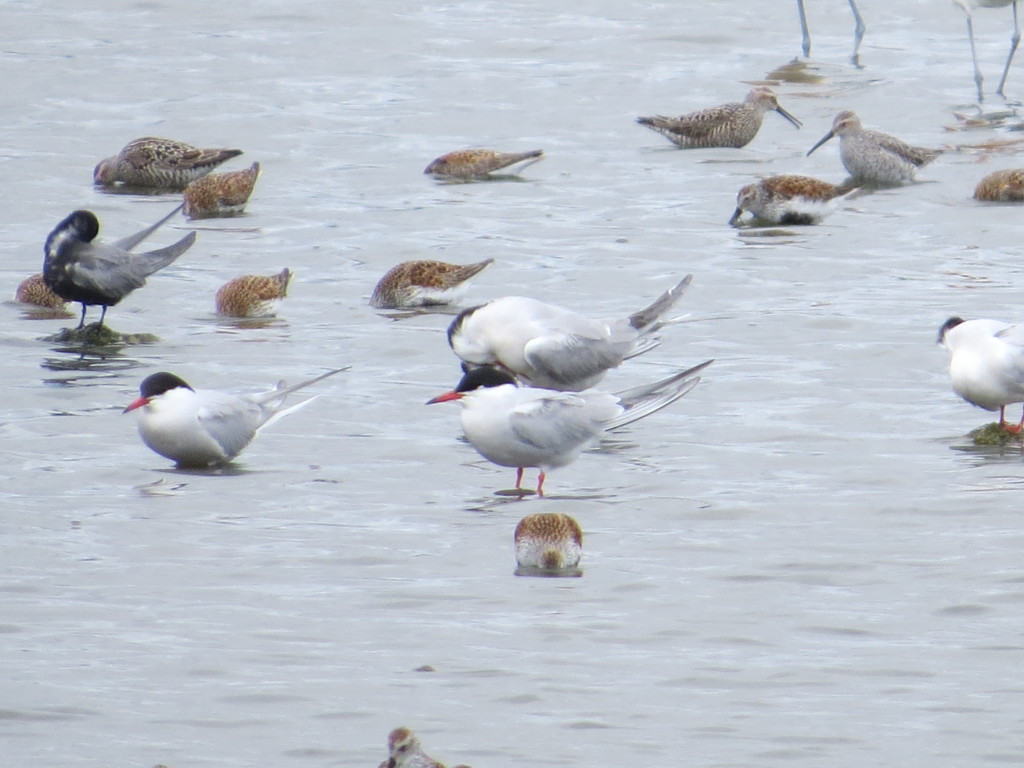
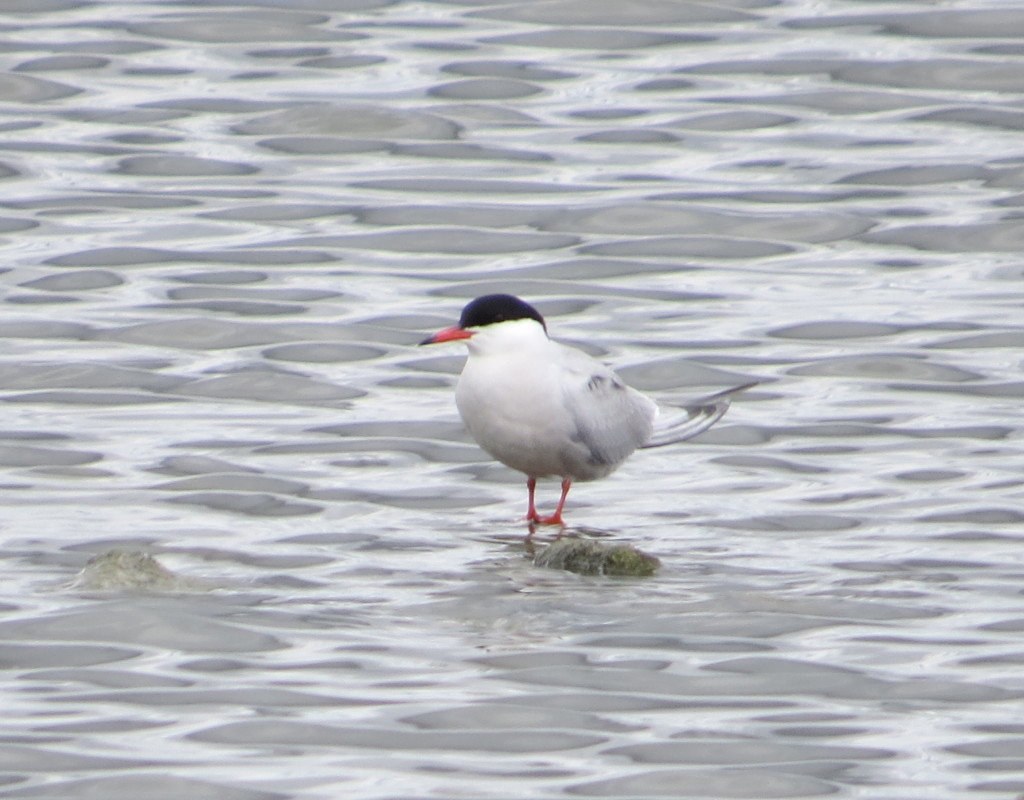
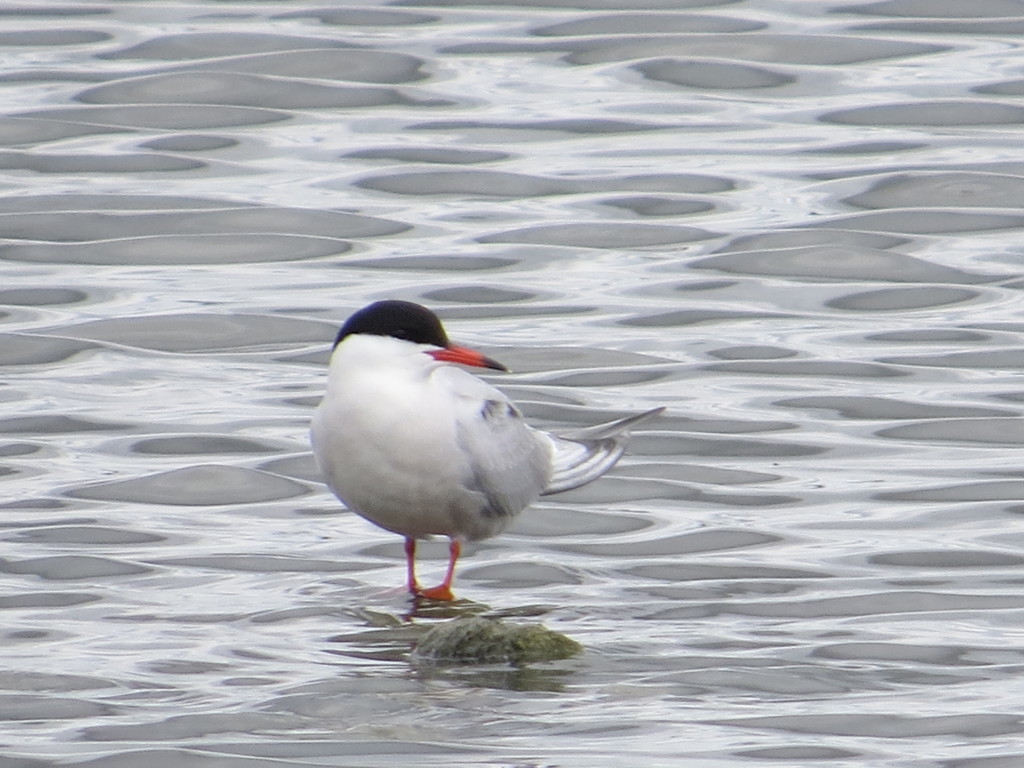
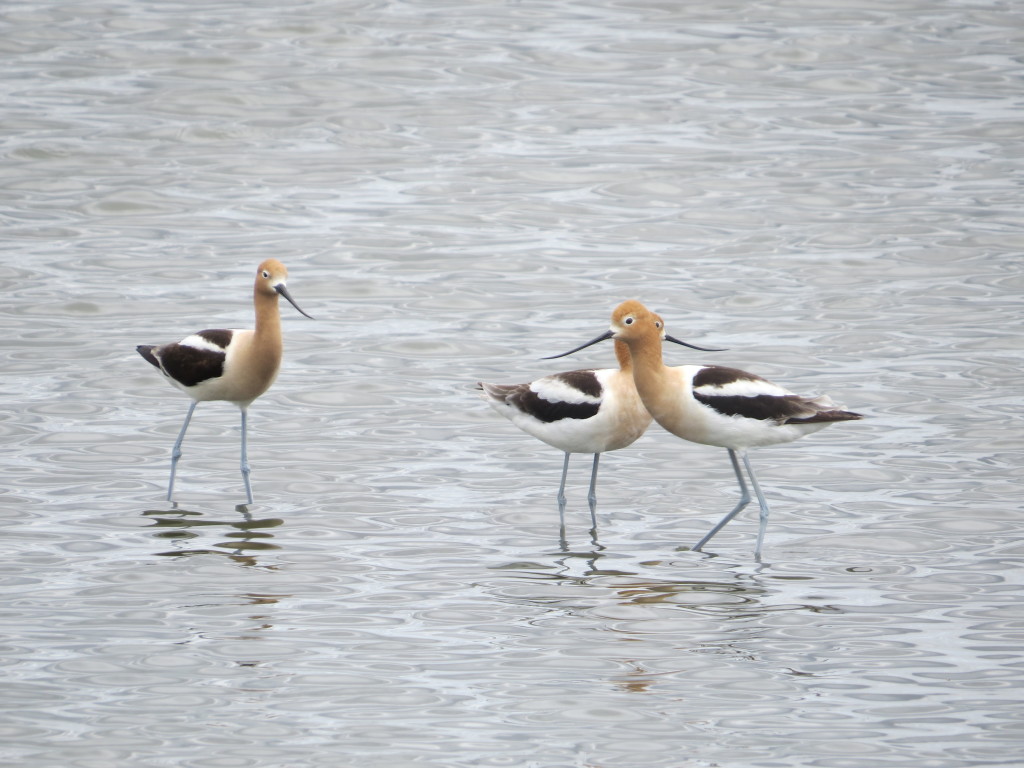
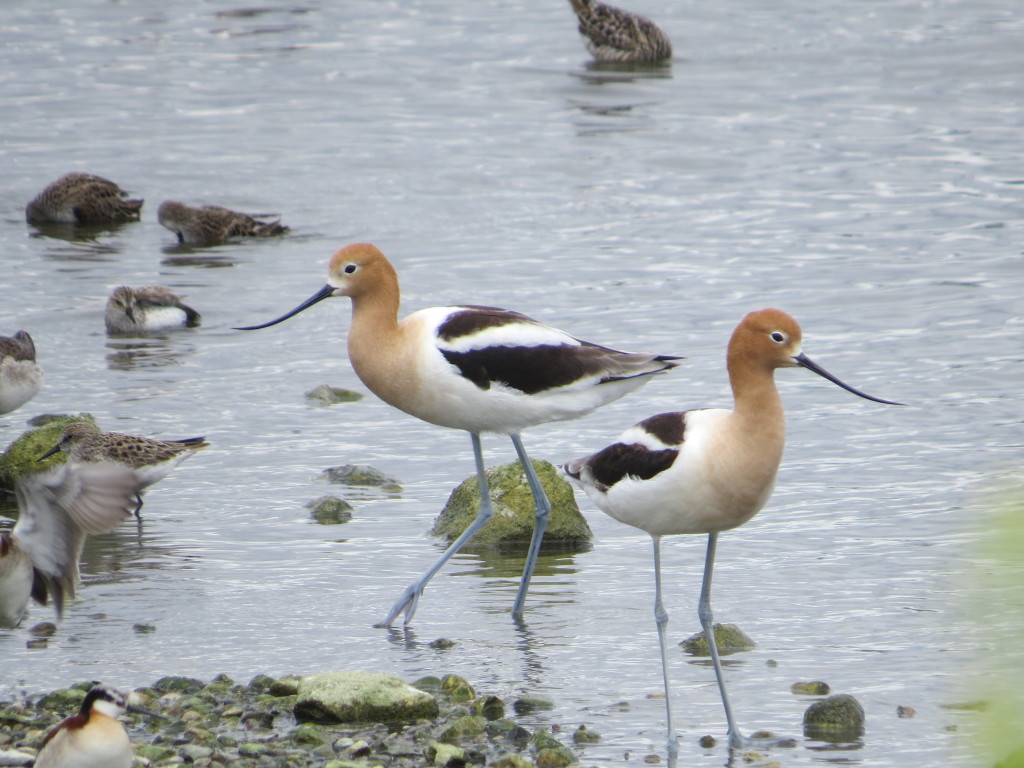
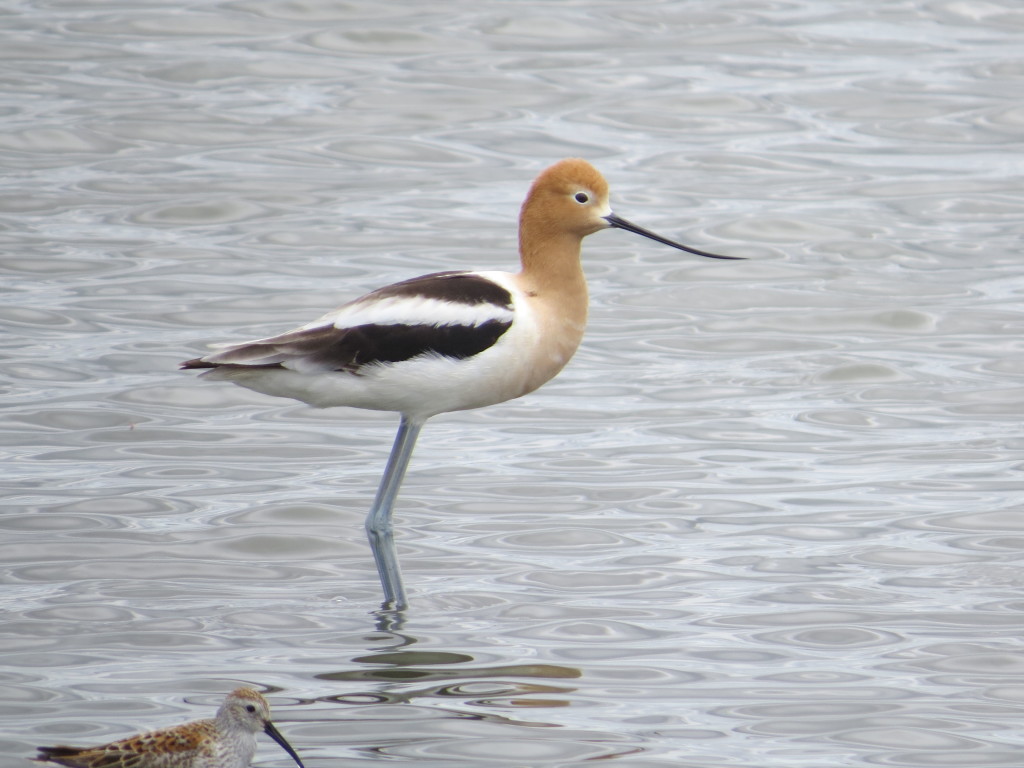
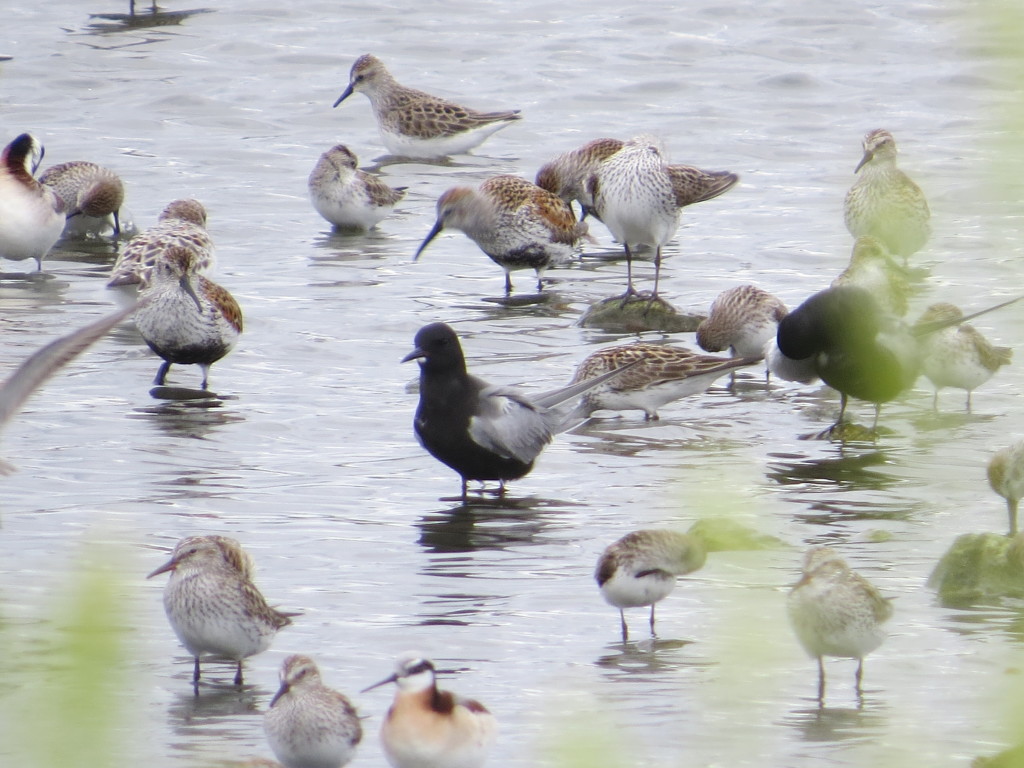 Dunlin were excessively plentiful and quite striking in full breeding plumage.
Dunlin were excessively plentiful and quite striking in full breeding plumage.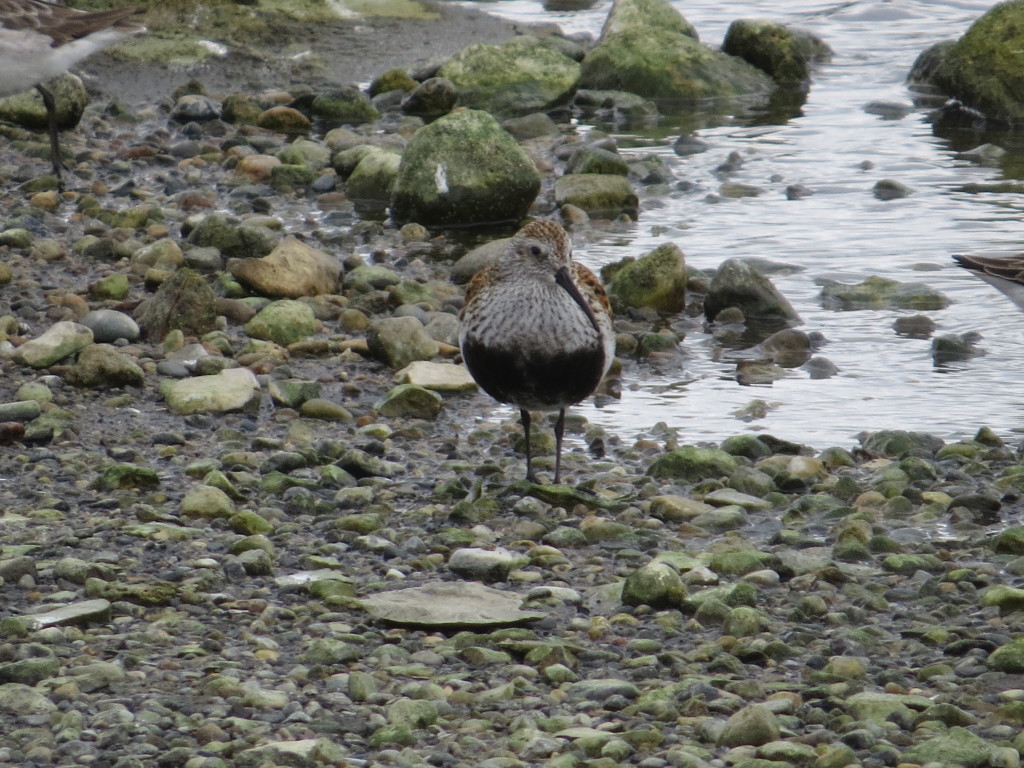
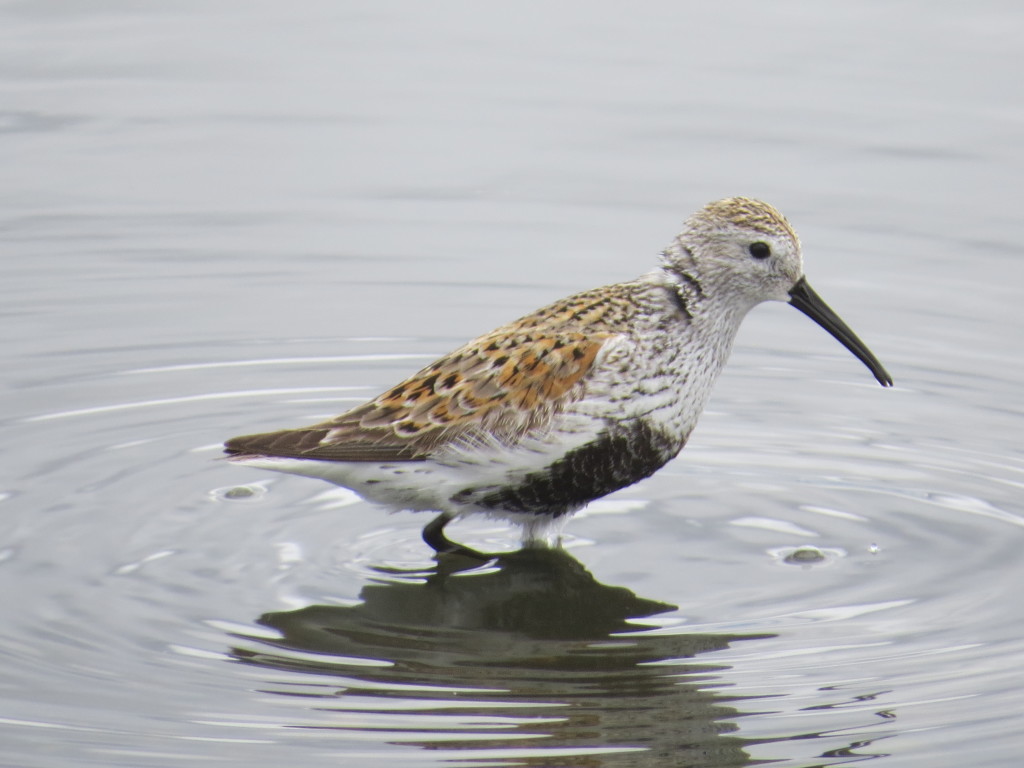
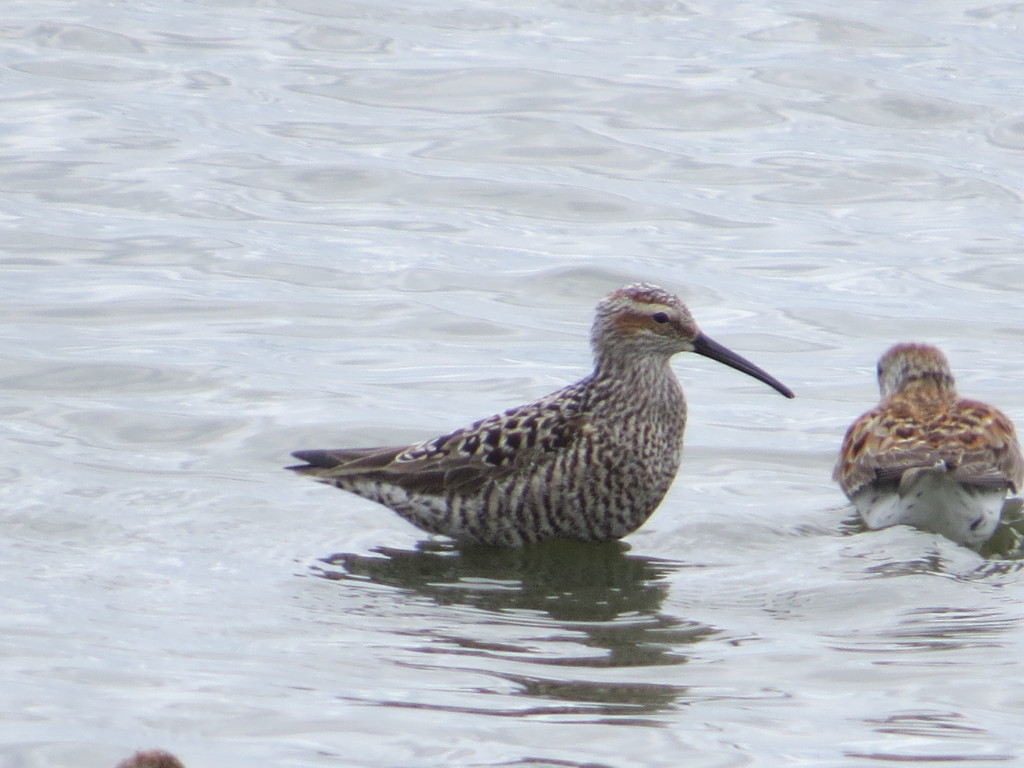
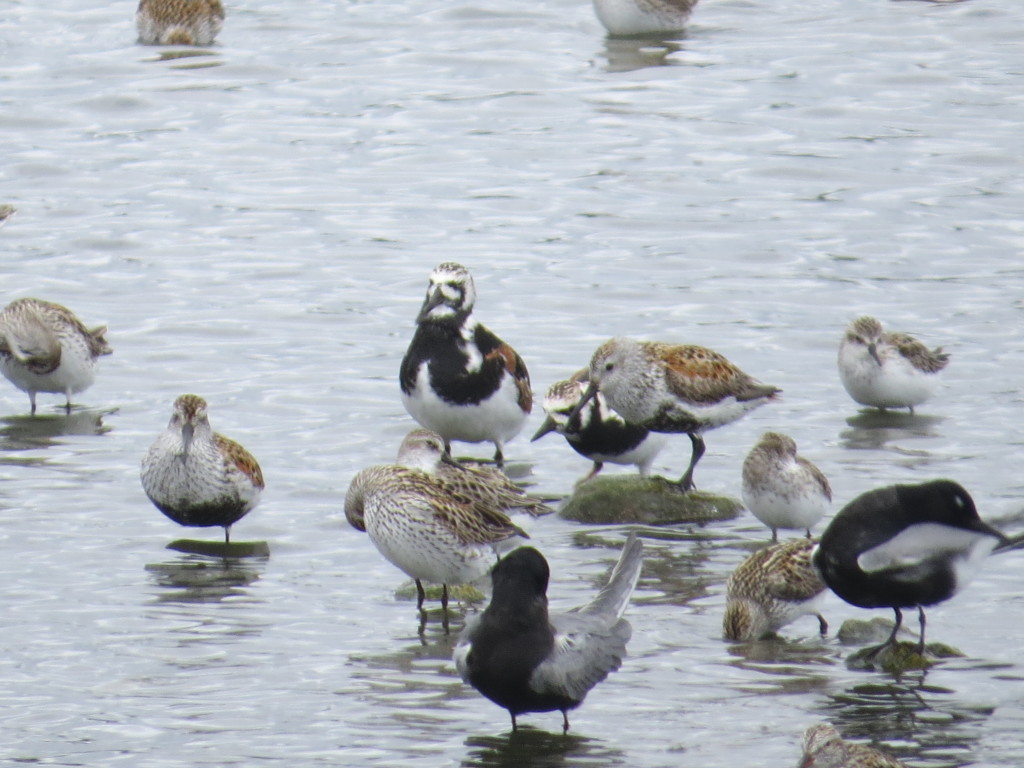 There was a lot going on with the shorebirds, both in numbers of birds and numbers of species. Wilson’s Phalaropes and White-rumped Sandpipers can be seen in my photos, but I didn’t focus any of my photography efforts on them. I probably could have spent hours photographing all these shorebirds, but I wanted to take another crack at that White-eyed Vireo and the day was already getting long for the non-birders. It was time to head back to New Ulm and hit the trail one last time.
There was a lot going on with the shorebirds, both in numbers of birds and numbers of species. Wilson’s Phalaropes and White-rumped Sandpipers can be seen in my photos, but I didn’t focus any of my photography efforts on them. I probably could have spent hours photographing all these shorebirds, but I wanted to take another crack at that White-eyed Vireo and the day was already getting long for the non-birders. It was time to head back to New Ulm and hit the trail one last time.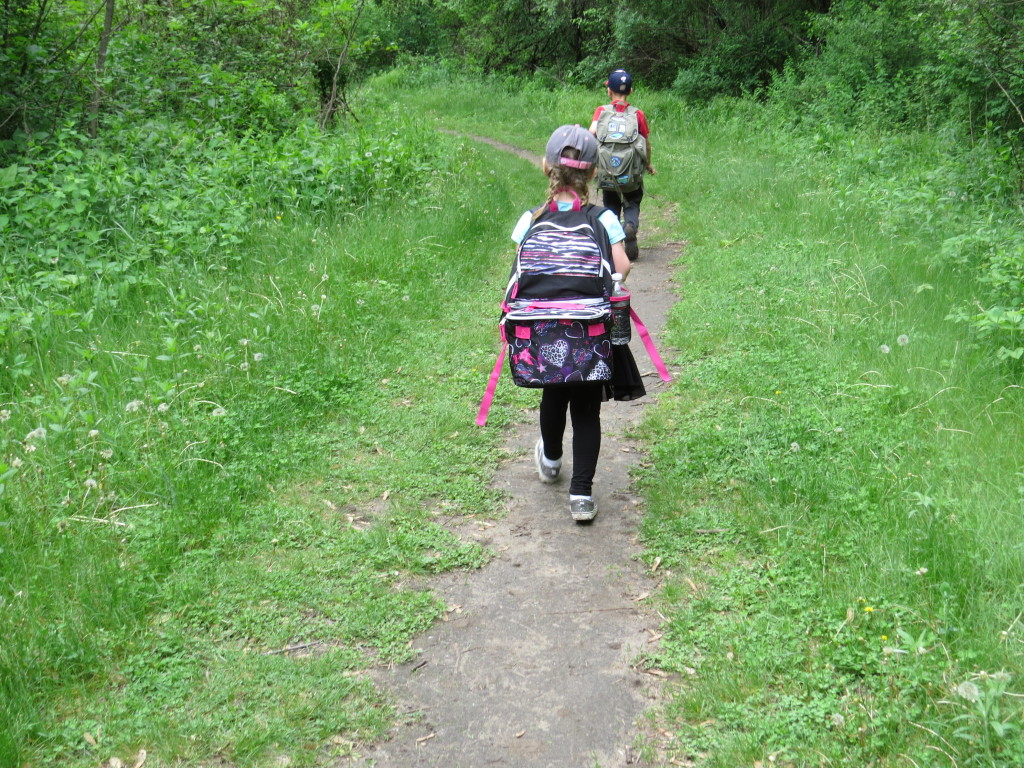
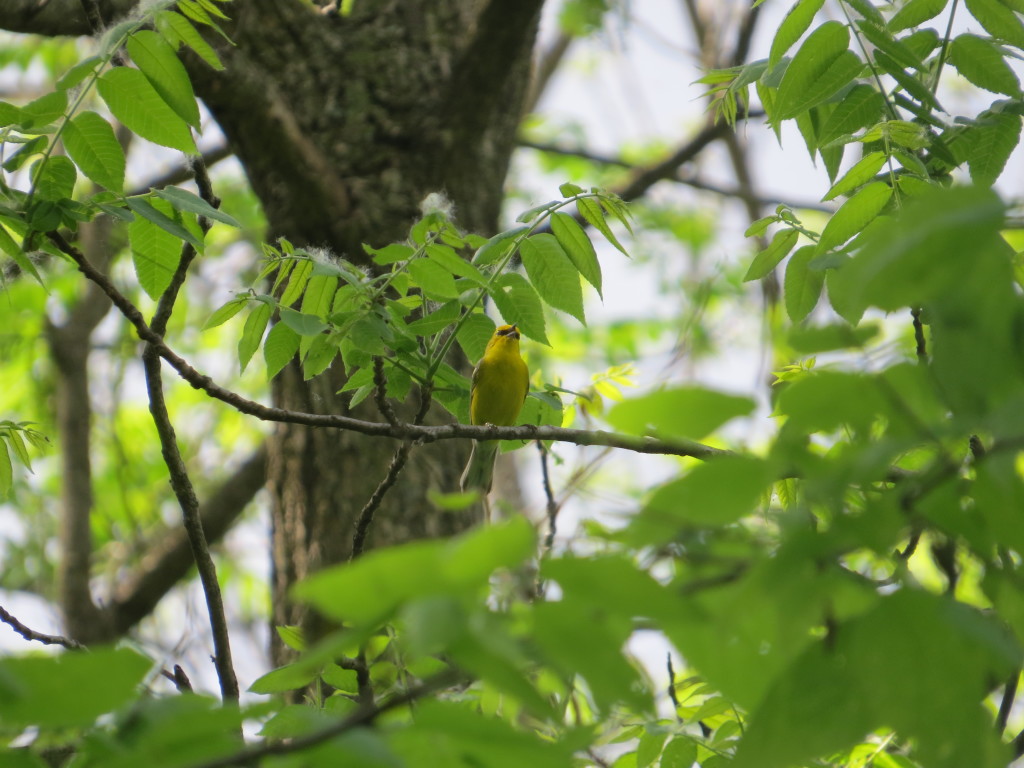
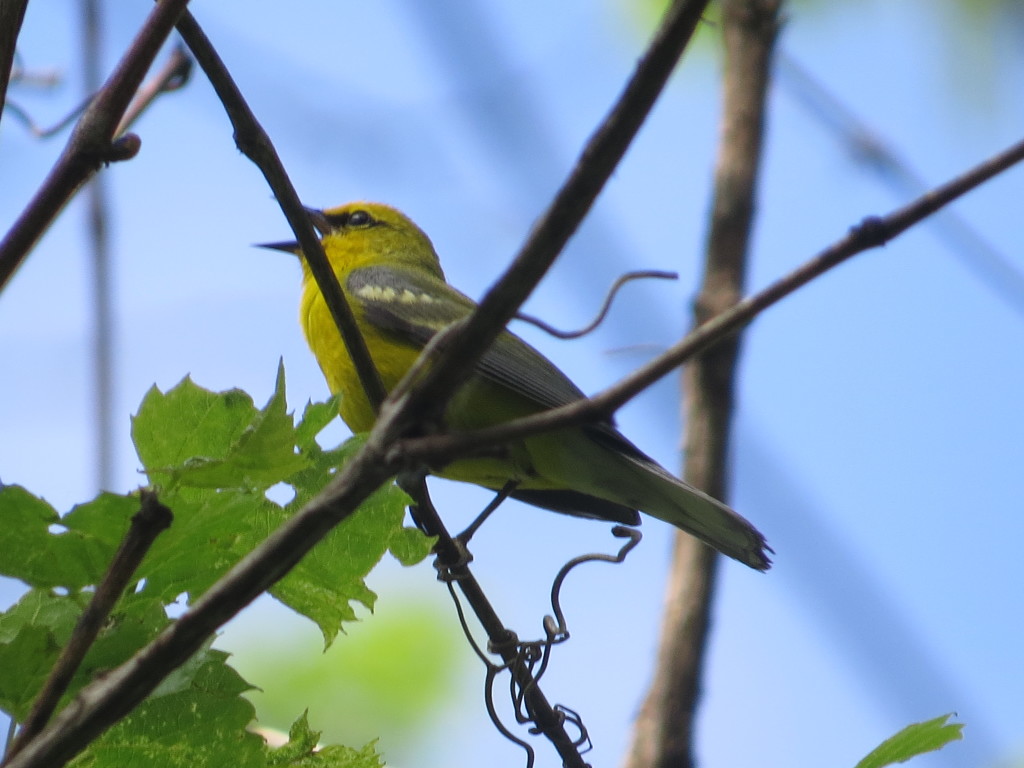 The Blue-winged Warbler was another great consolation prize in a day full of consolation goodies. It felt good to get better photos of this species.
The Blue-winged Warbler was another great consolation prize in a day full of consolation goodies. It felt good to get better photos of this species.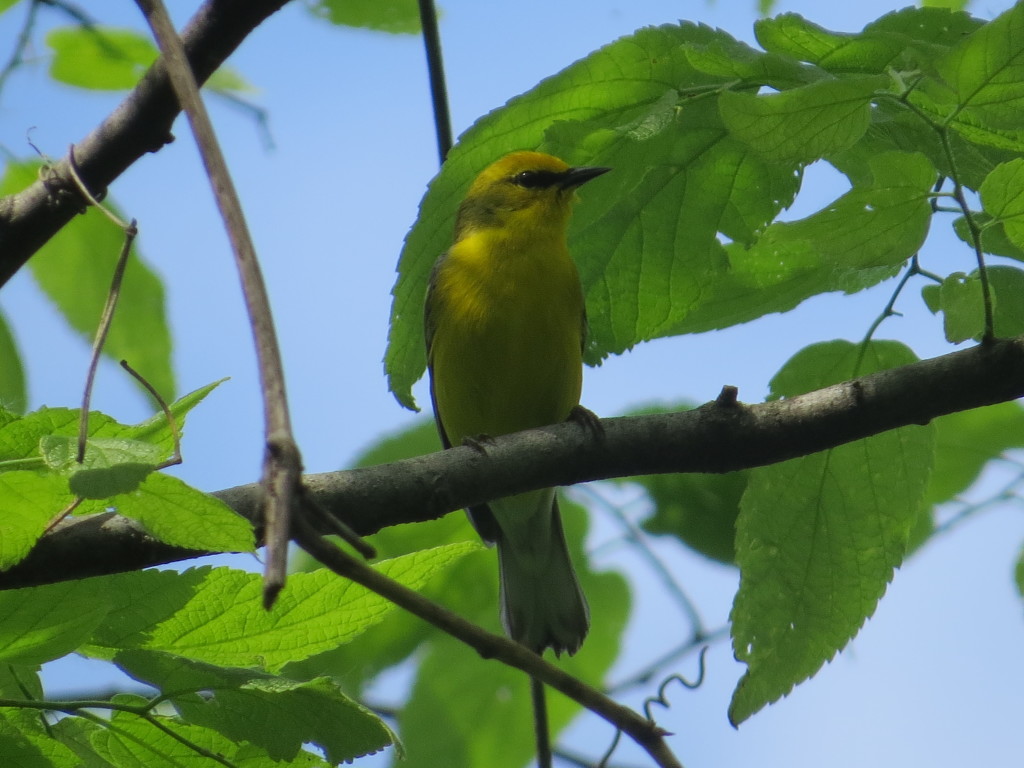 So, we went to see a White-eyed Vireo and failed in that regard. However, this day was an unimaginable lifer and FOY grab. Getting four lifers (WEVI, HUGO, SAND, COTE) in a day instate is unheard of at this stage in our birding. Topping it off with some incredible shorebirds like the Avocets and Turnstones as well as the Blue-winged Warbler really made for an exciting day back on our old stomping grounds.
So, we went to see a White-eyed Vireo and failed in that regard. However, this day was an unimaginable lifer and FOY grab. Getting four lifers (WEVI, HUGO, SAND, COTE) in a day instate is unheard of at this stage in our birding. Topping it off with some incredible shorebirds like the Avocets and Turnstones as well as the Blue-winged Warbler really made for an exciting day back on our old stomping grounds.